- Heavy facelift gives Picanto new life
- Big boost in standard safety equipment
- Fun to drive and also comfortable
- There's no getting around its modest performance
- Overseas versions offer more equipment
- Expensive to service
It’s been a difficult time in the Australian new car market for the past few years if you’re used to spending around $20,000 or less to get a new car on the road. Apparently thanks to the pandemic and continual price rises, there are just two new cars available around the $20k mark these days, and that’s a big contrast to even just five years ago when budget-priced options were plentiful by comparison. Thankfully, there are still some options – two, to be precise – and one of them is the recently updated Kia Picanto. Is the 2024 Kia Picanto GT-Line still the default $20k-ish new car purchase? Let’s find out.
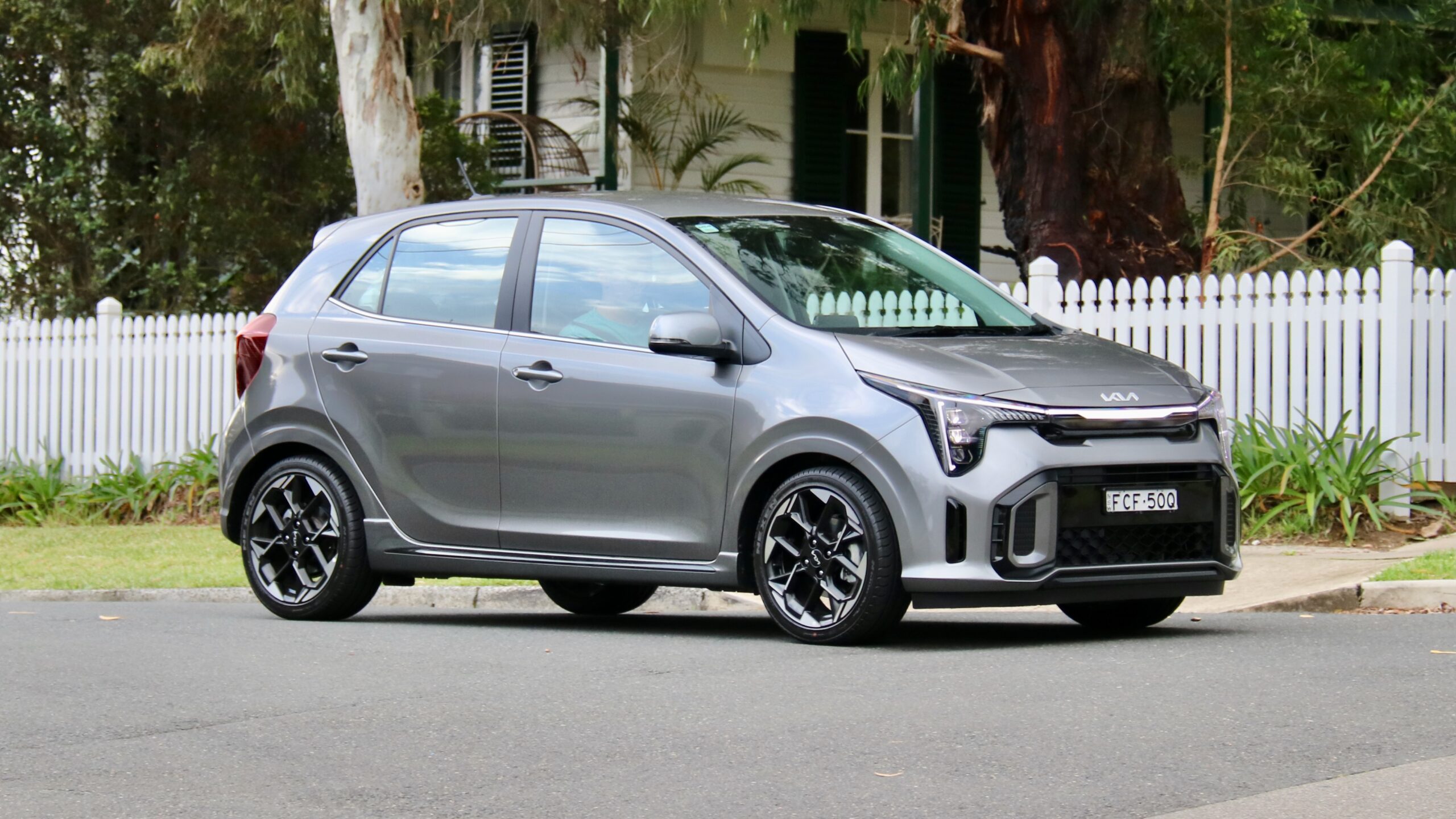
If you’re reading this review and asking what cars used to be available for under $20,000, the list is massive – even cars still on sale today like the Mazda2 and Volkswagen Polo used to be significantly less expensive. The Picanto is no different, as it used to be available for around $15,000, but it too has been affected by price rises over the past few years. The updated Picanto’s price tag grew most with the recent facelift, but thankfully, that also included a lot of important safety equipment across the range.
How much does the 2024 Kia Picanto GT-Line cost to buy?
The 2024 Kia Picanto range kicks off with the entry-level Sport (previously known as the S), which is priced from $17,890 plus on-road costs for the manual and $19,490 +ORC for the automatic. The model we’re testing here is the GT-Line, priced from $19,690 plus on-road costs for the manual and $21,290 +ORC for the auto – the former is nationally priced at $22,490 drive away and the latter is $23,490 drive away. Gone is the fun-packed GT model, which used to sit atop the global Picanto lineup.
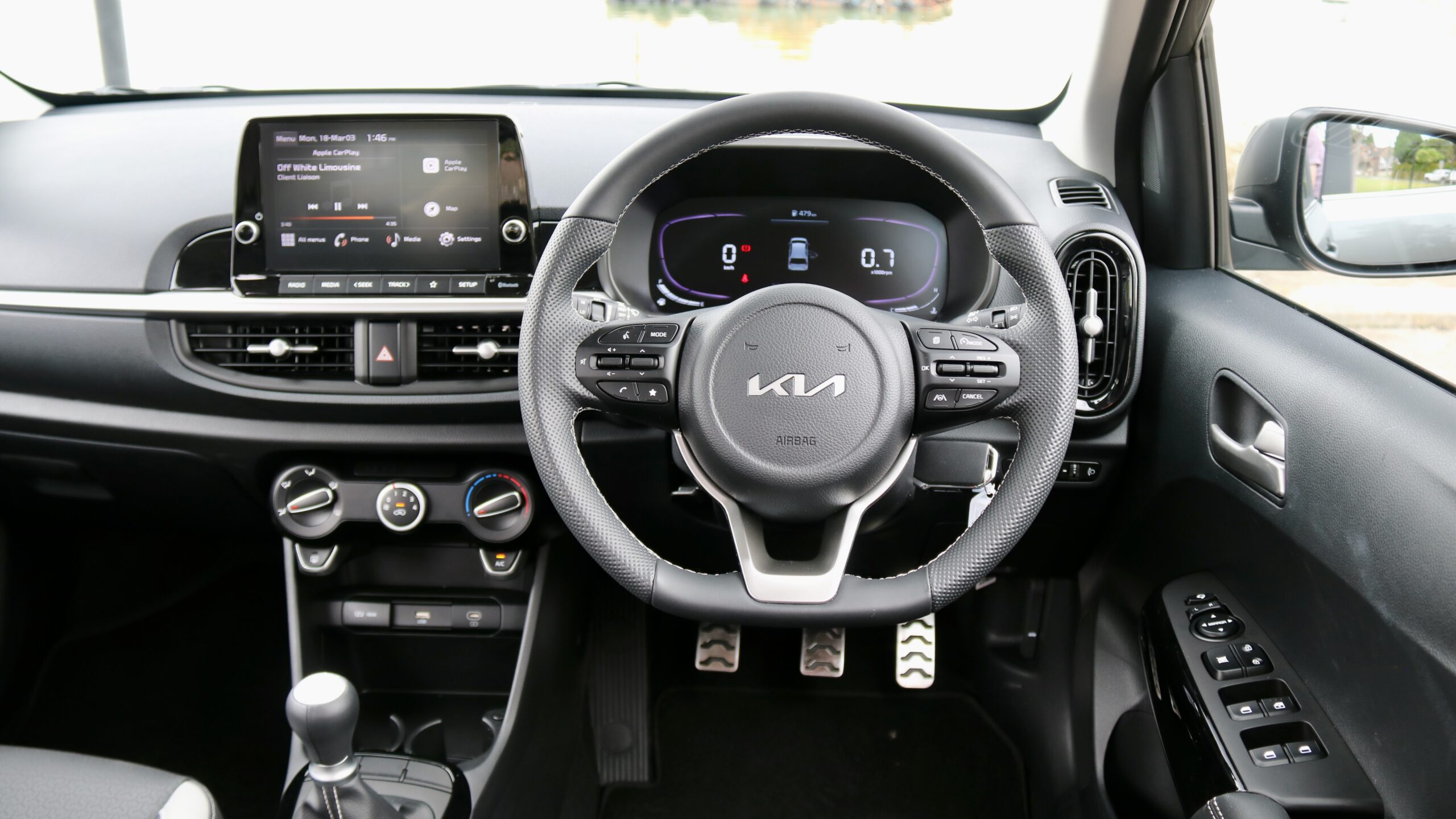
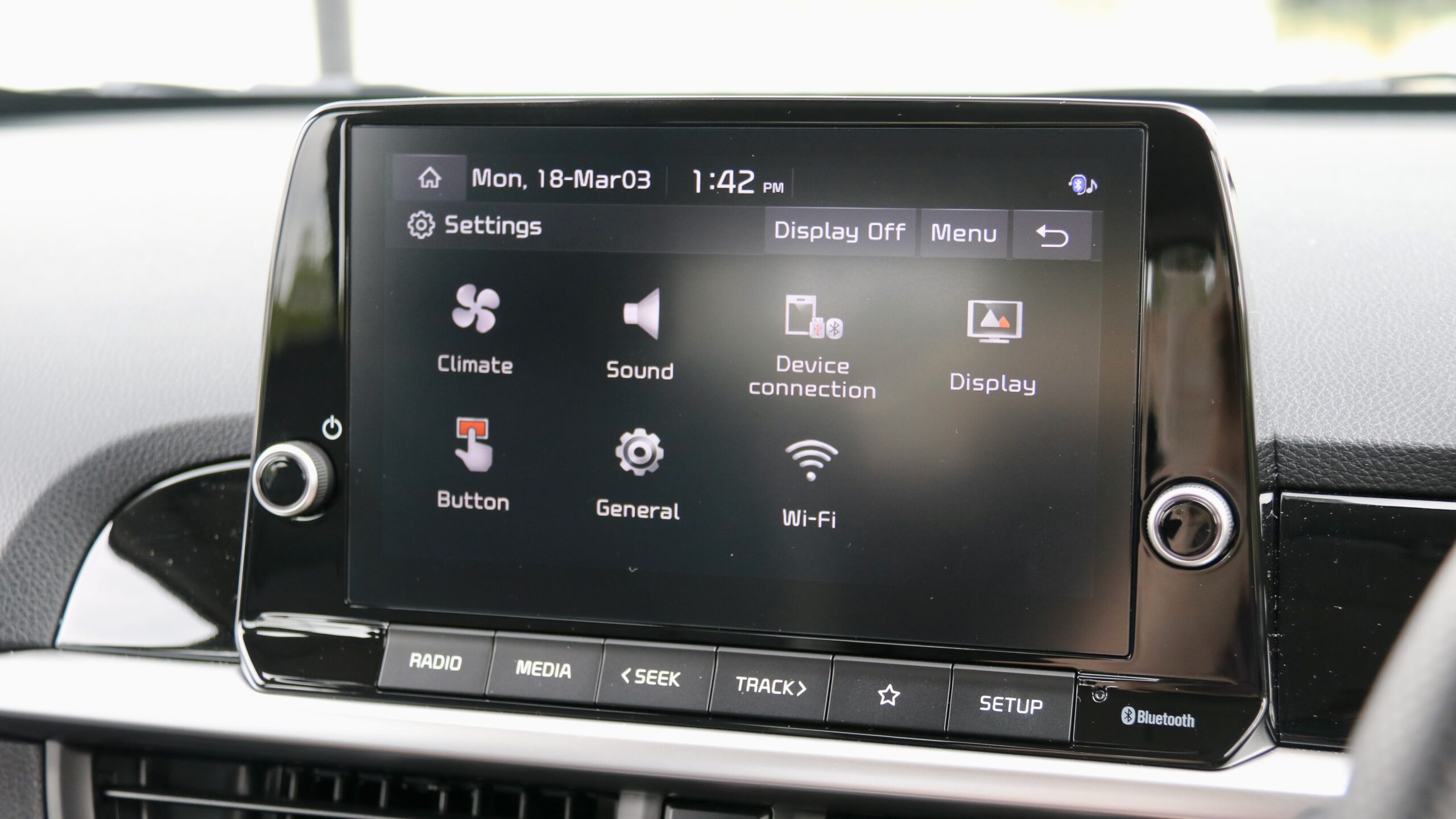
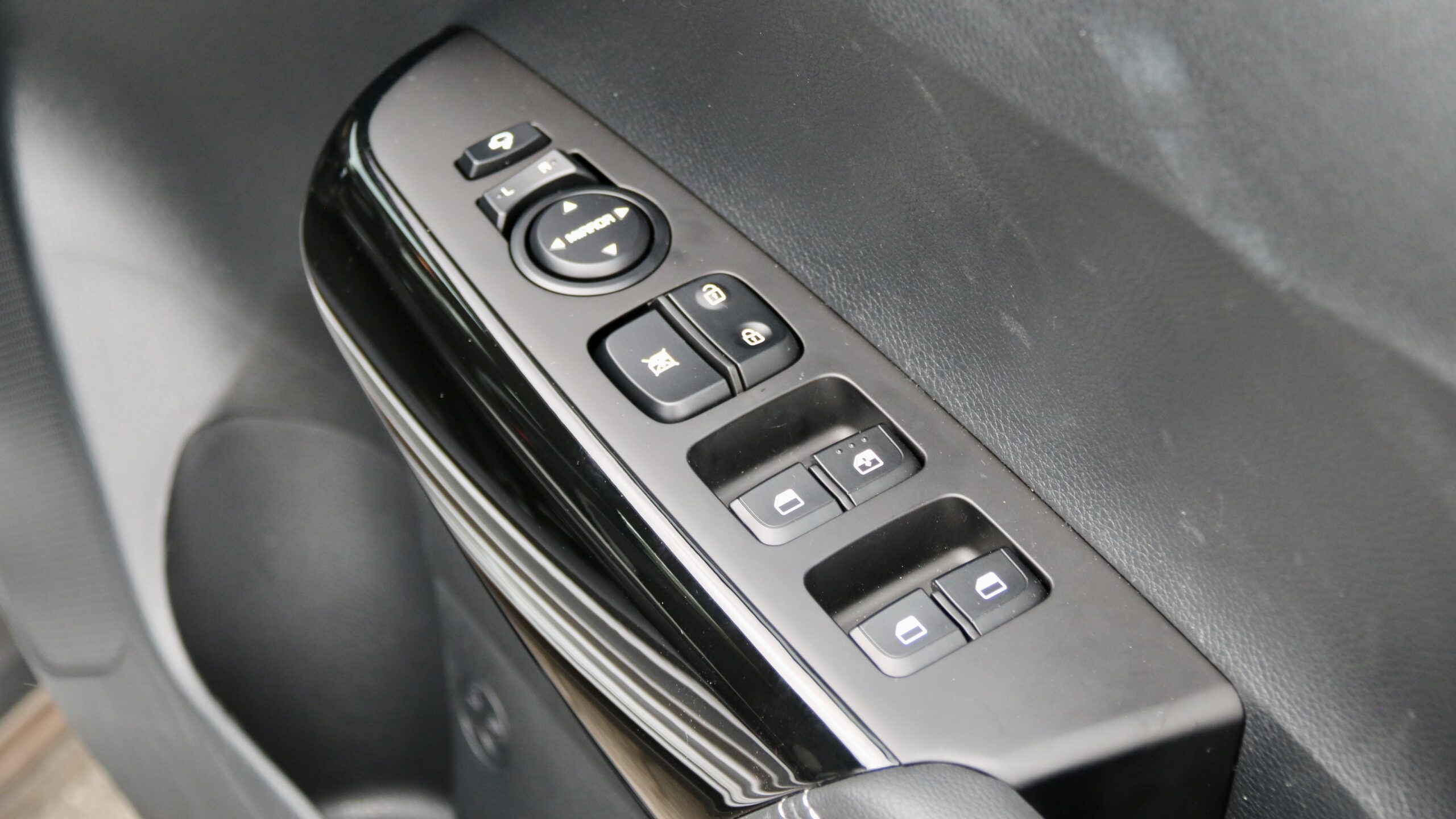
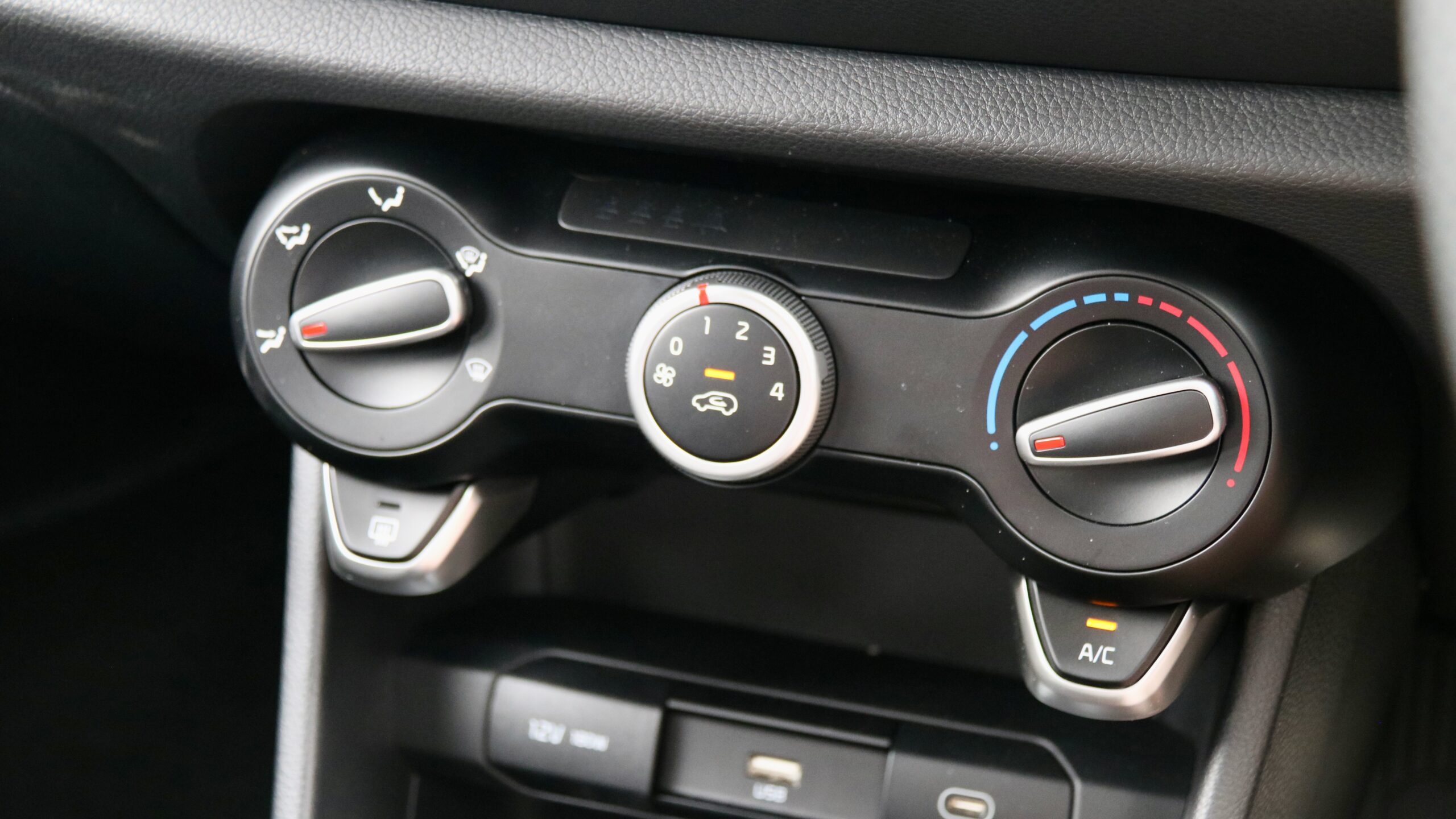
Picanto GT-Line standard equipment:
- 16-inch alloy wheels
- Dusk-sensing automatic LED exterior lighting (including headlights, front indicators and tailights)
- Frontal LED daytime running lights joined by a signature LED centre light
- LED rear fog light
- Intermittent manual wipers
- Manual air-conditioning
- Remote keyless entry
- Synthetic leather upholstery with a height-adjustable driver’s seat
- Power windows including an automatic driver’s window with remote opening and closing
- Heated and auto-folding exterior mirrors
- 8.0-inch touchscreen
- Wireless Apple CarPlay and Android Auto
- AM/FM radio
- Six-speaker sound system
- 4.2-inch driver’s display
- Synthetic leather-wrapped steering wheel and gear knob
- Cruise control with a speed limiter
- Alloy pedals
- 1x USB-A port, 2x USB-C ports and 1x 12V socket
Picanto GT-Line standard safety equipment:
- Six airbags
- Autonomous emergency braking (AEB) with forward collision warning
- Lane departure warning
- Lane keeping assistance with lane trace assistance
- Blind-spot monitoring with rear cross-traffic alert (both with braking)
- Hill hold assistance
- Driver attention monitoring with lead vehicle departure alert
- Safe exit assist
- Rear occupant alert
- Alarm
- Rear parking sensors
- Reversing camera
- Auto high beam
The current-generation Picanto’s safety rating expired this year due to age and it’s unlikely that it will be re-tested.
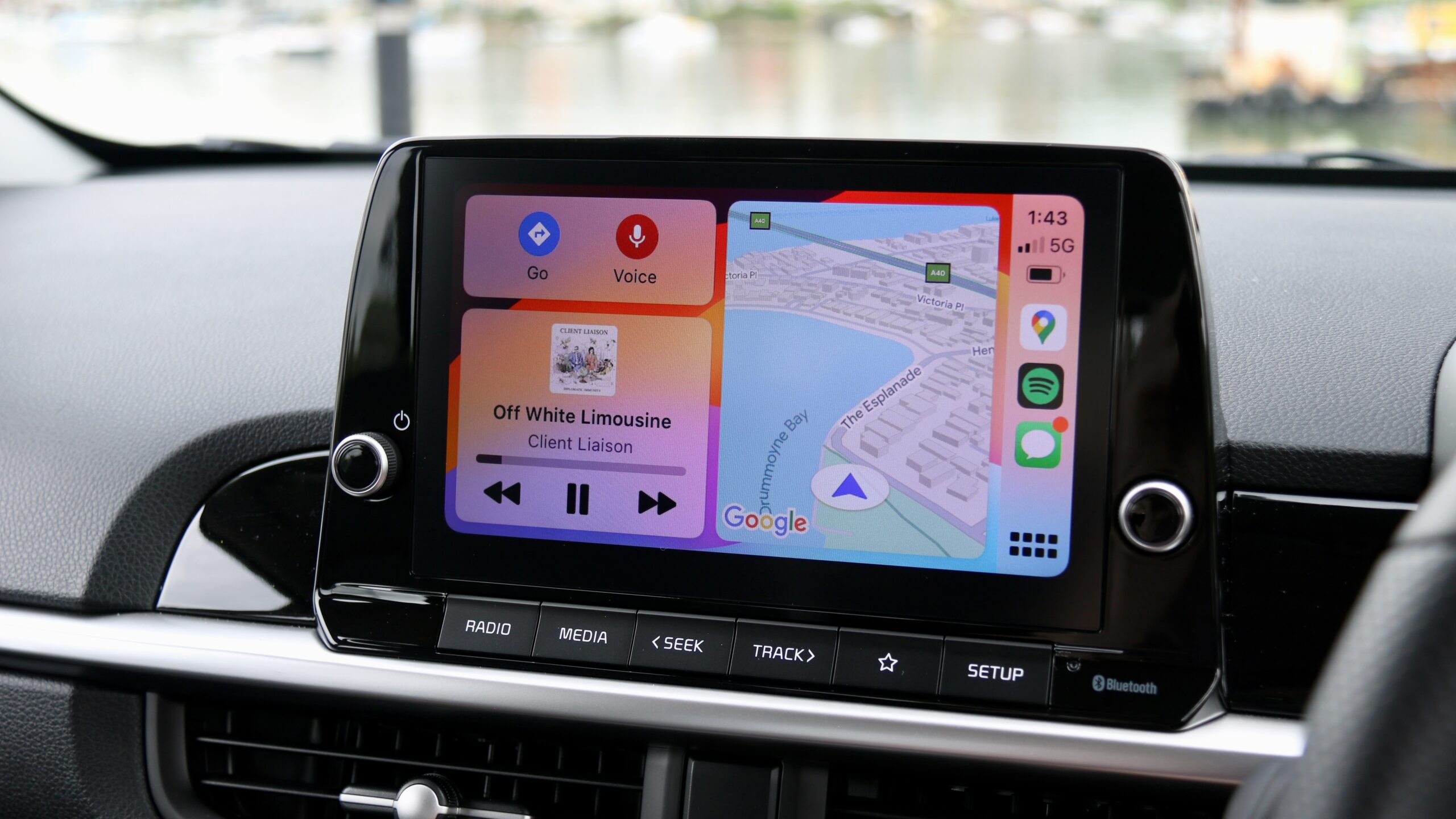
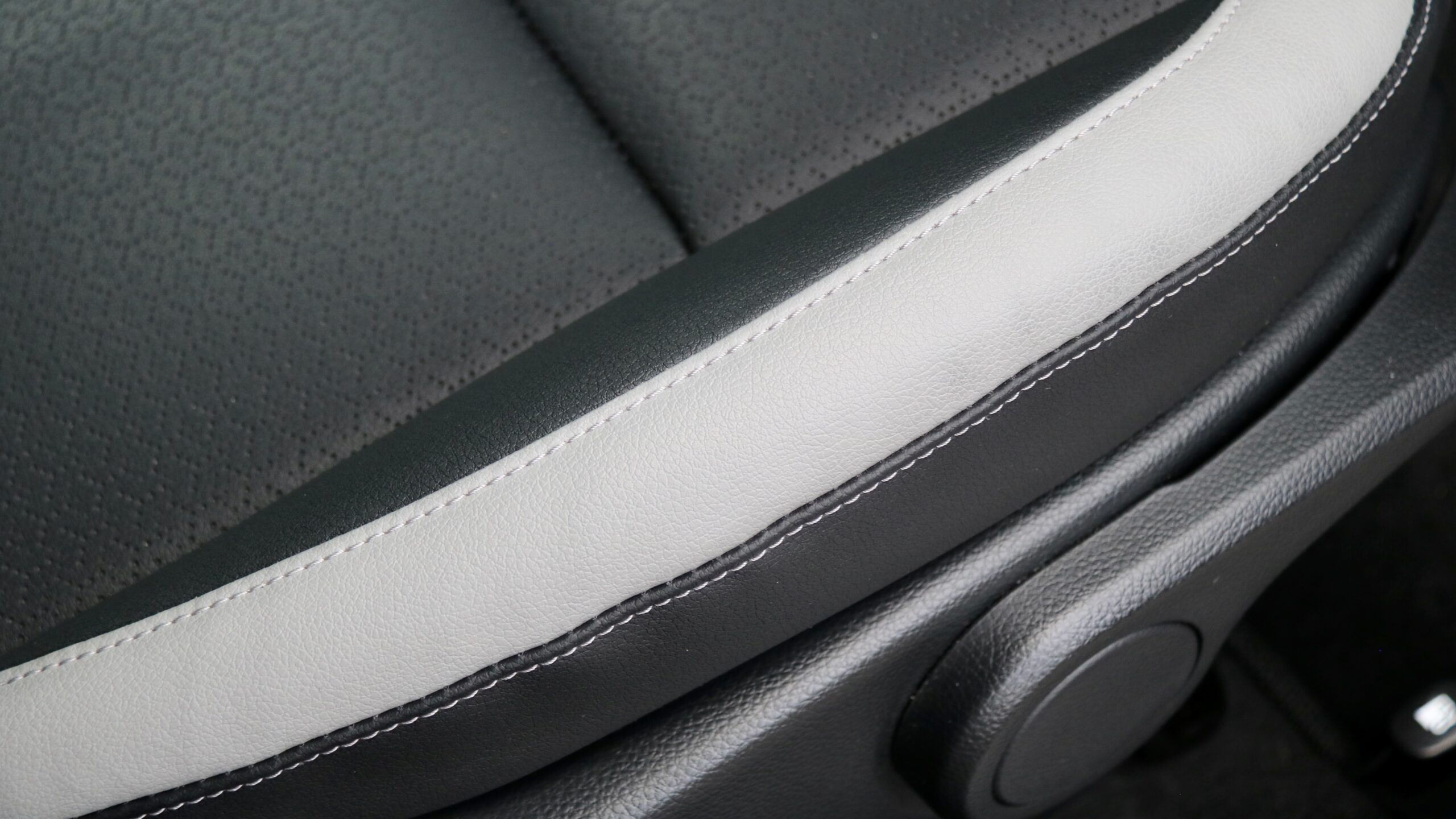
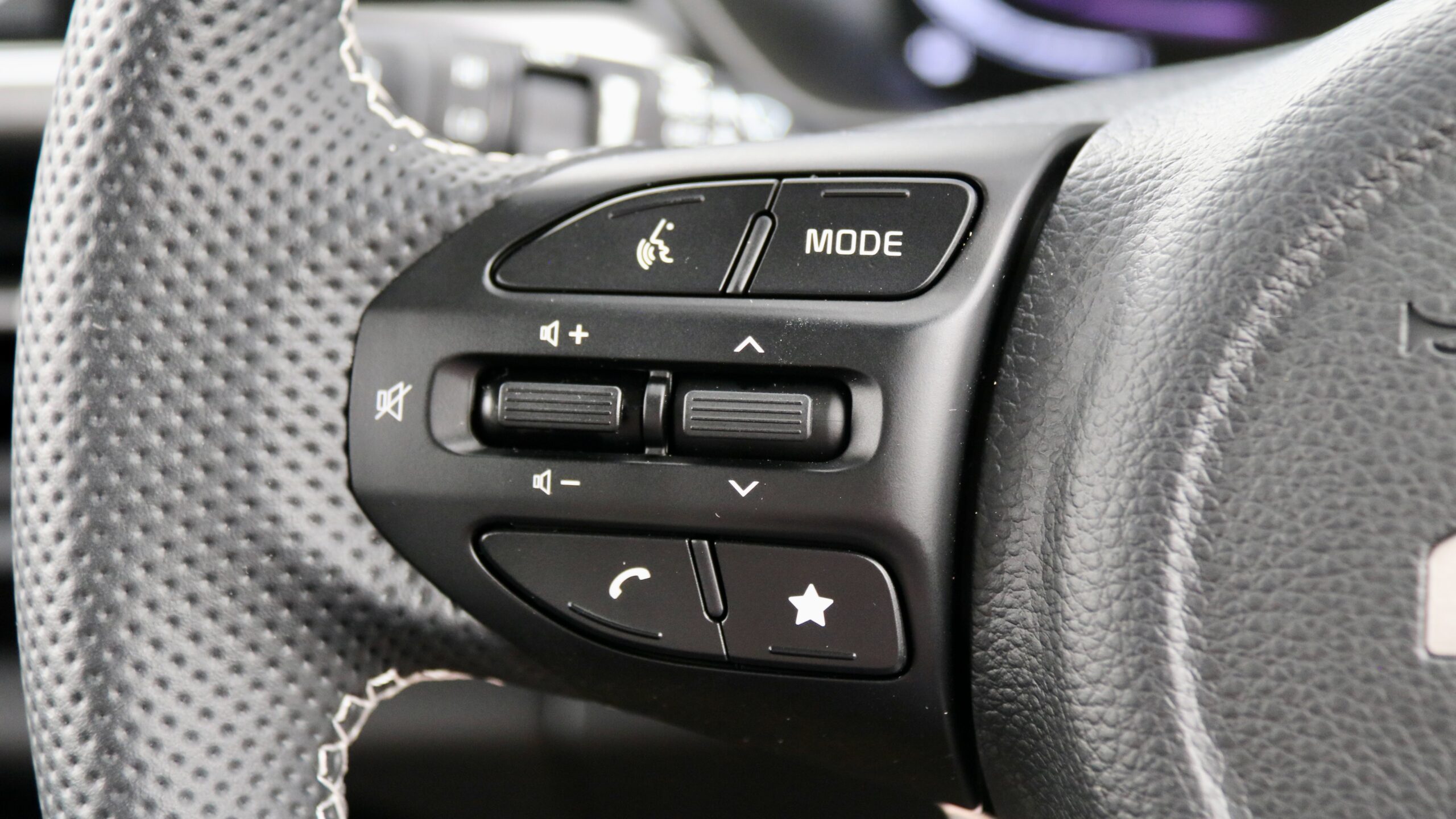
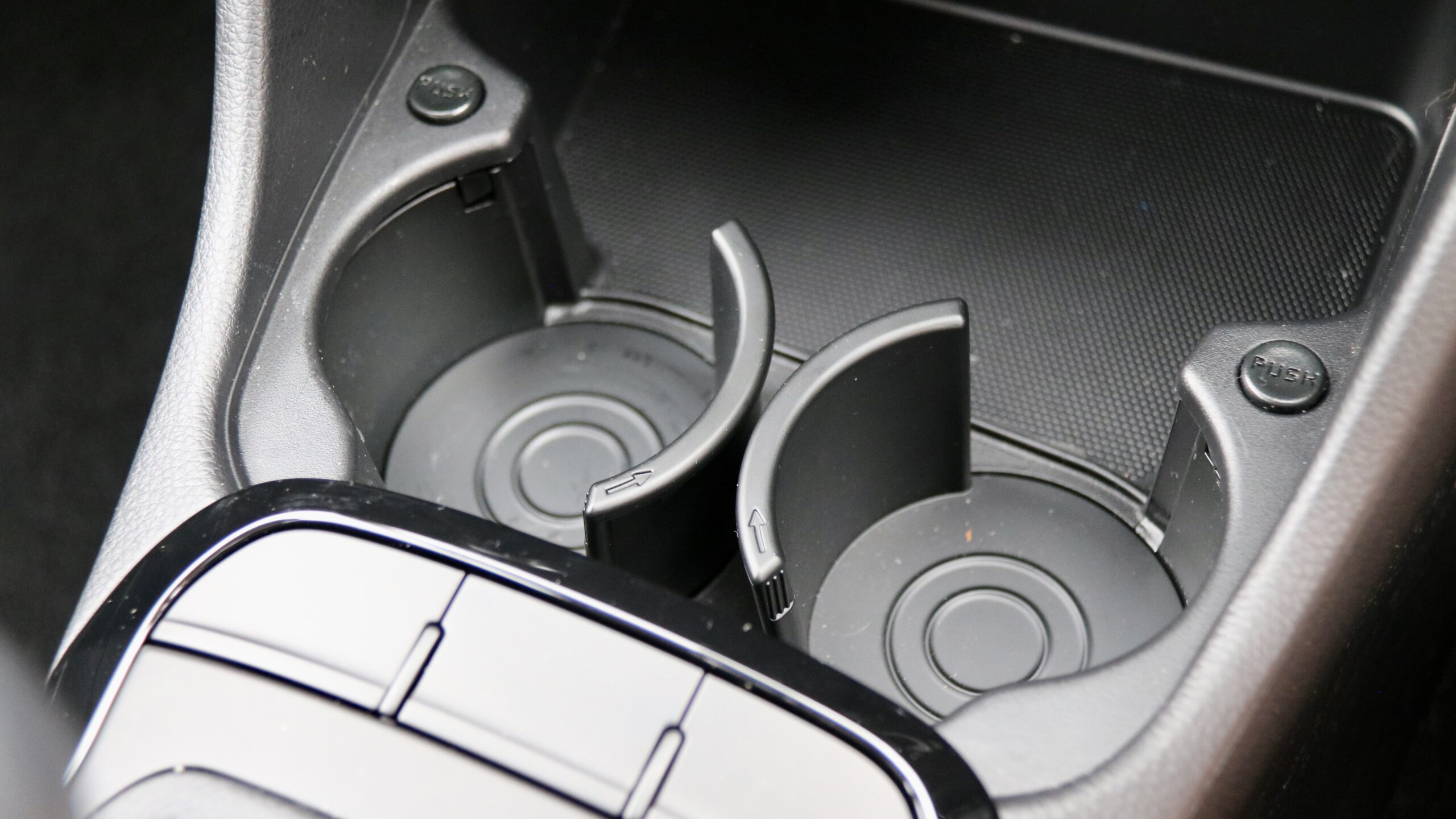
Picanto GT-Line colour range:
- Clear White: $0
- Sparkling Silver: $0
- Aurora Black: $520
- Sporty Blue: $520
- Adventurous Green: $520
- Signal Red: $520
- Astro Grey: $520 (fitted to our test car)
Just a few years ago, cars like the Skoda Fabia, Kia Rio, Hyundai Accent, Suzuki Swift and Toyota Yaris were all available for less than the $20,000, but while the Fabia, Swift and Yaris are all now more expensive, the Rio and Accent simply aren’t available in Australia any longer.
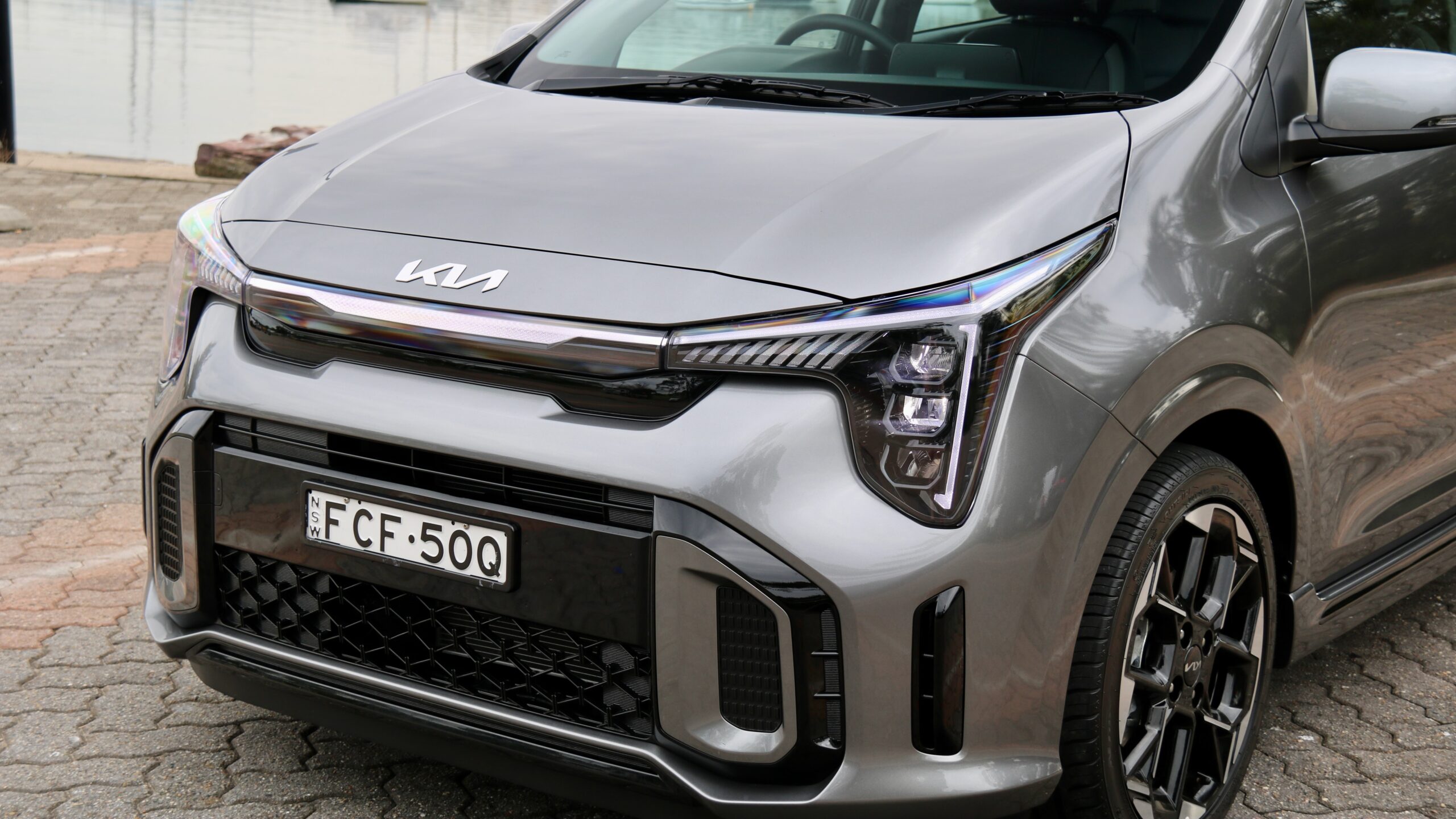
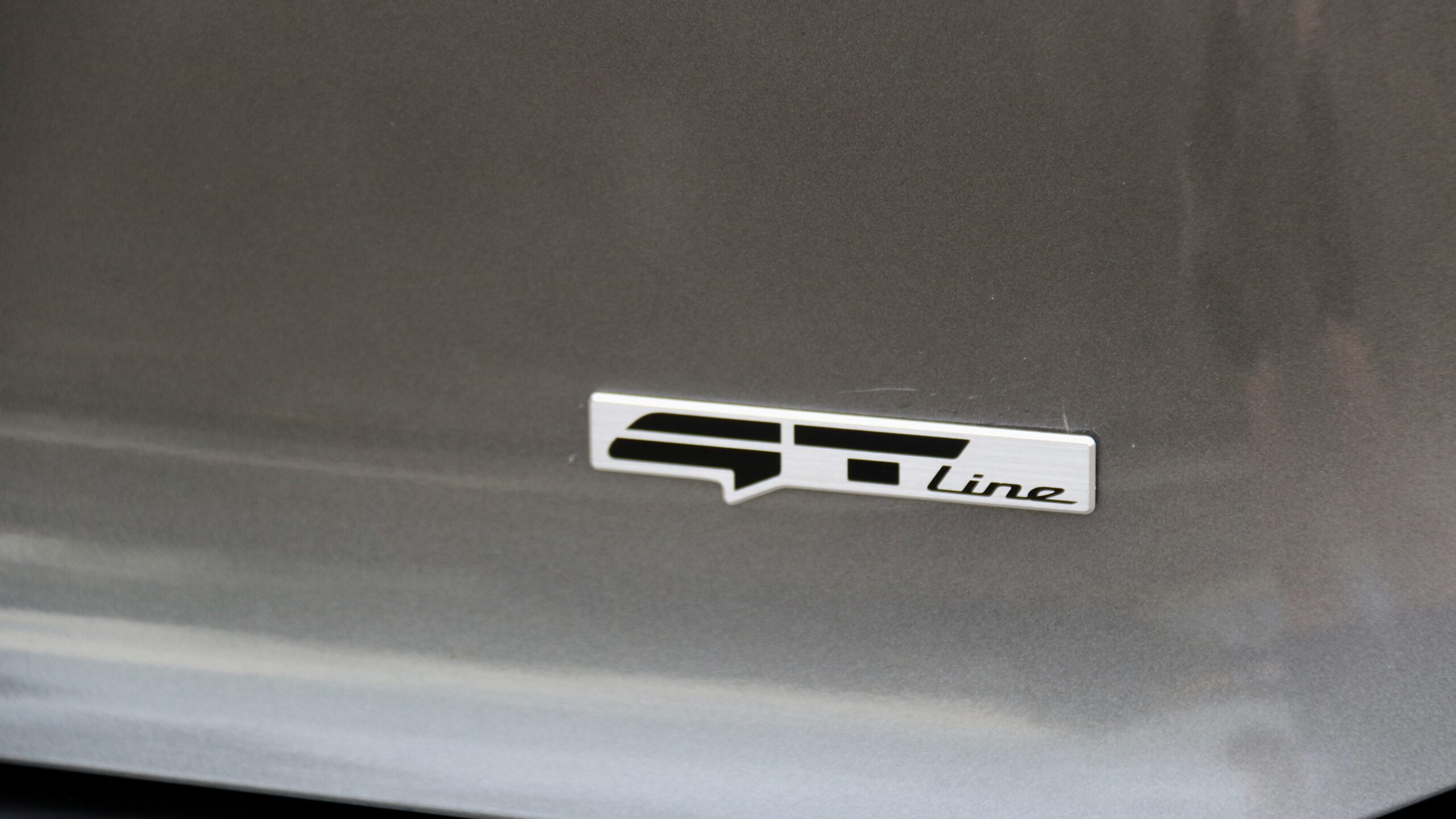
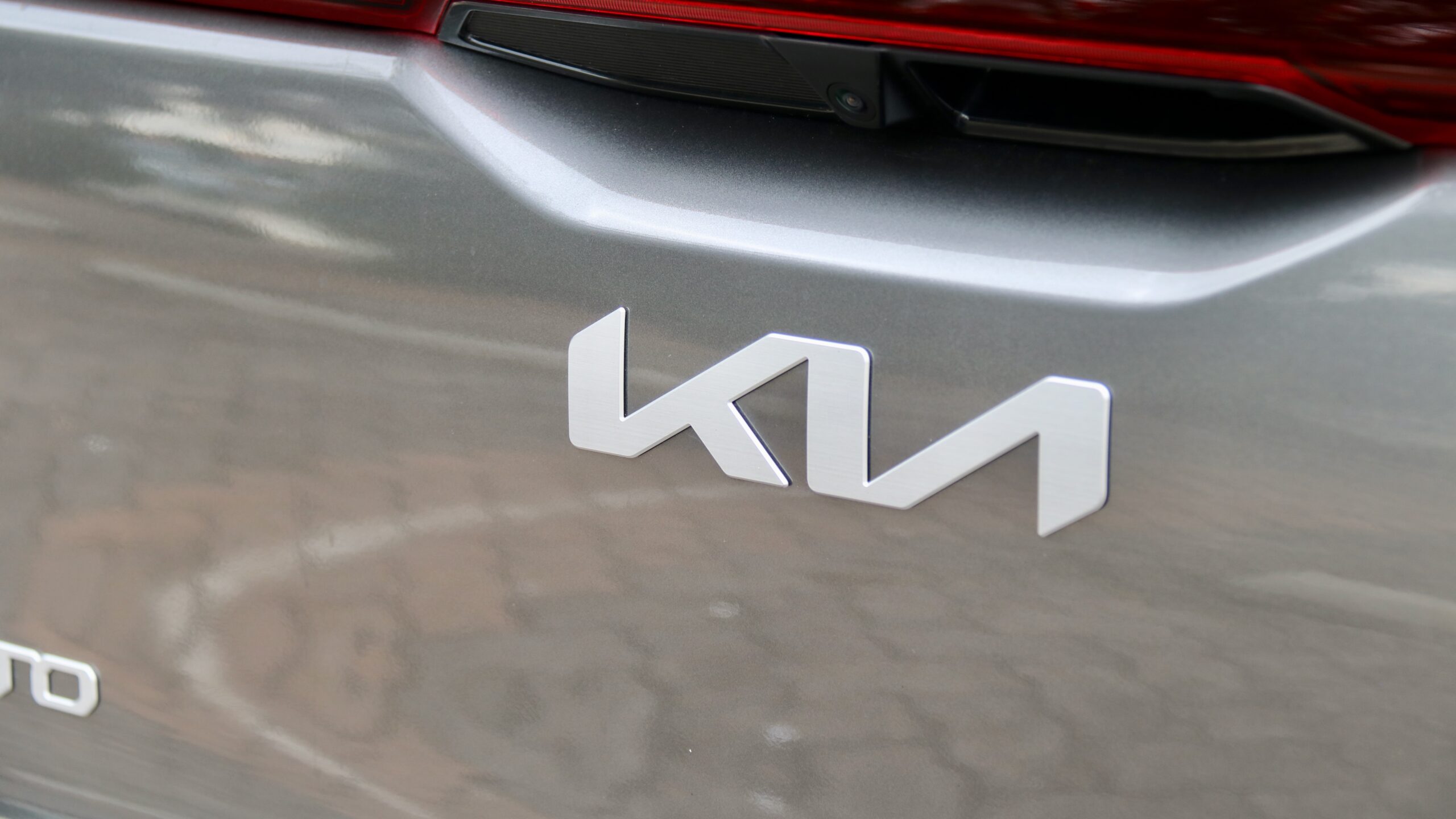
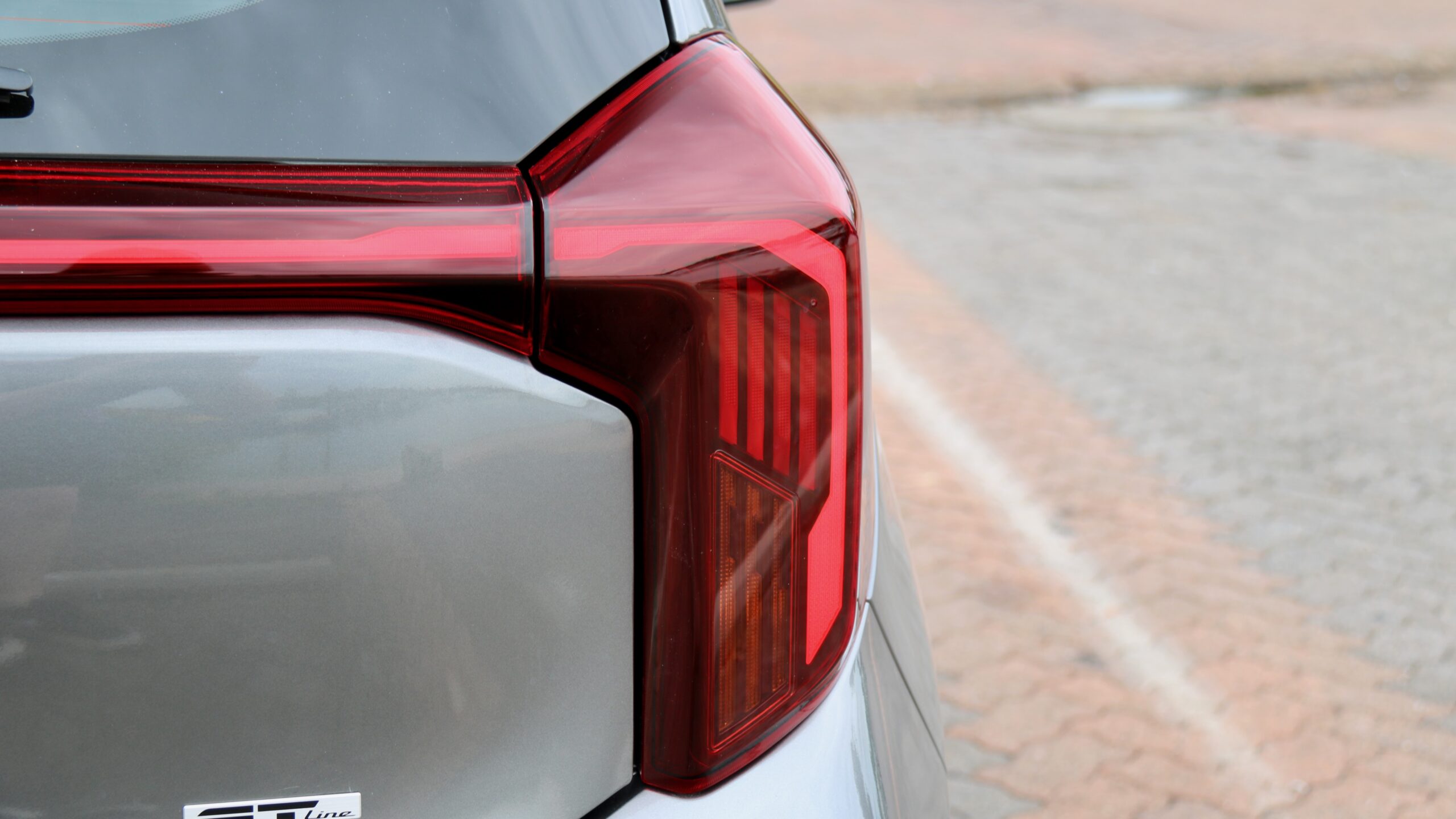
That leaves the MG 3 Excite automatic ($19,990 drive away) as the main rival to the Picanto GT-Line, though while the Picanto is slightly smaller and less powerful than the MG 3, it is significantly better equipped than its rival. While the two cars feature automatic headlights, 16-inch alloy wheels and manual air-conditioning, the Picanto adds features like synthetic leather trim, wireless smartphone mirroring, LED exterior lighting and important safety features like auto emergency braking, lane keeping assistance, blind-spot monitoring with rear cross-traffic alert and driver attention monitoring. The current shape MG 3 has none of these features, and because of that, the Picanto is far more recommendable.
How efficient is the 2024 Kia Picanto GT-Line?
Under the bonnet remains a 1.25-litre naturally aspirated four-cylinder unit that has been in service since the current-generation Picanto found its way down under. It produces a modest 62kW of power (at 6,000rpm) and 122Nm of torque (at 4,000rpm) and while that might not seem like a lot, keep in mind that the Picanto GT-Line has a tare weight of just 976kg. Power is sent to the front wheels via either a five-speed manual or optional four-speed automatic transmission – if you’re choosing between the transmissions, definitely get the manual as it’s a rarity on the new car market and it gives it more pep. Against the Picanto, the MG 3 range features a larger 82kW/150Nm 1.5-litre engine, though it weighs more at 1,170kg (tare) and features a four-speed automatic transmission as standard.
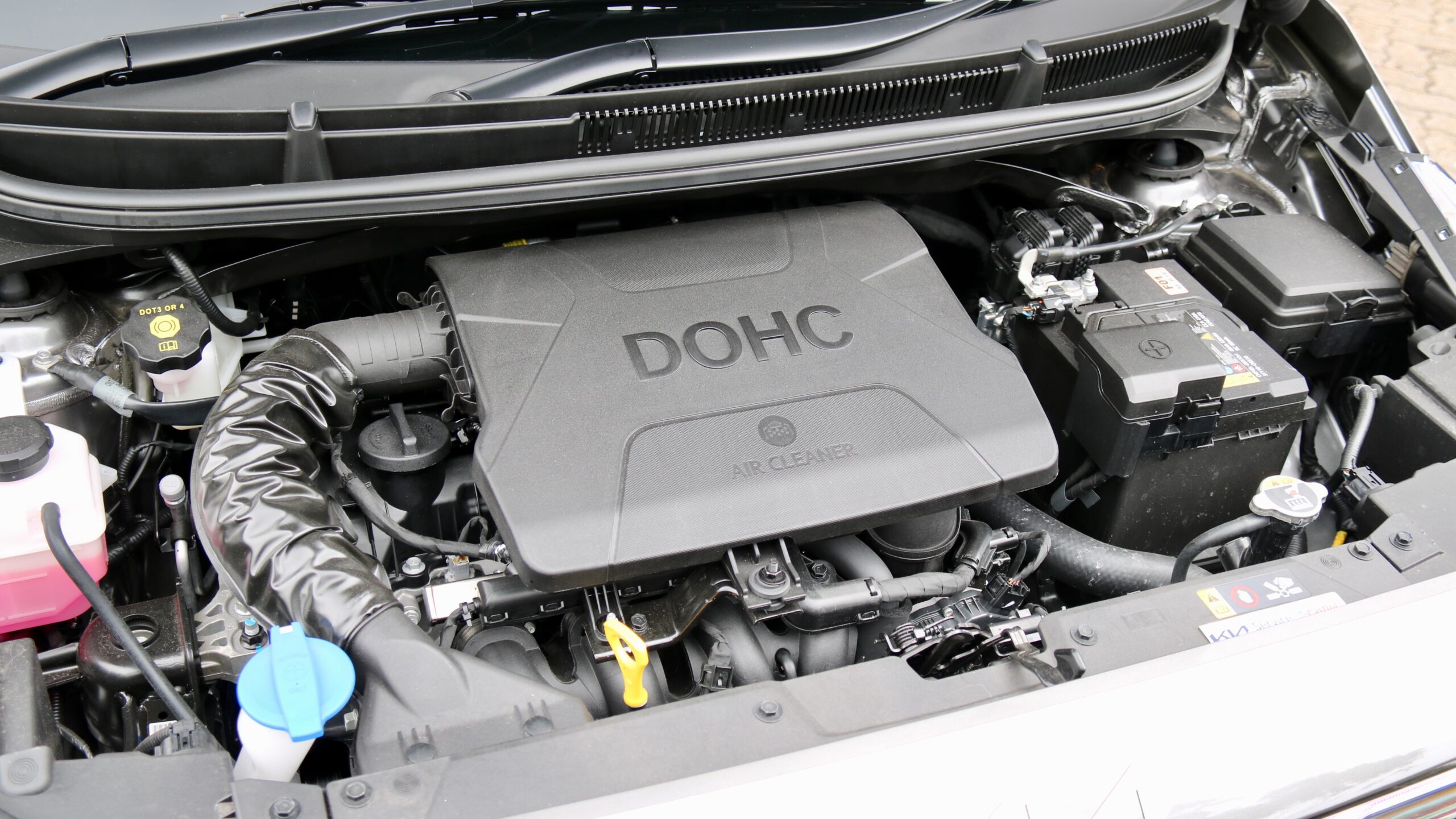
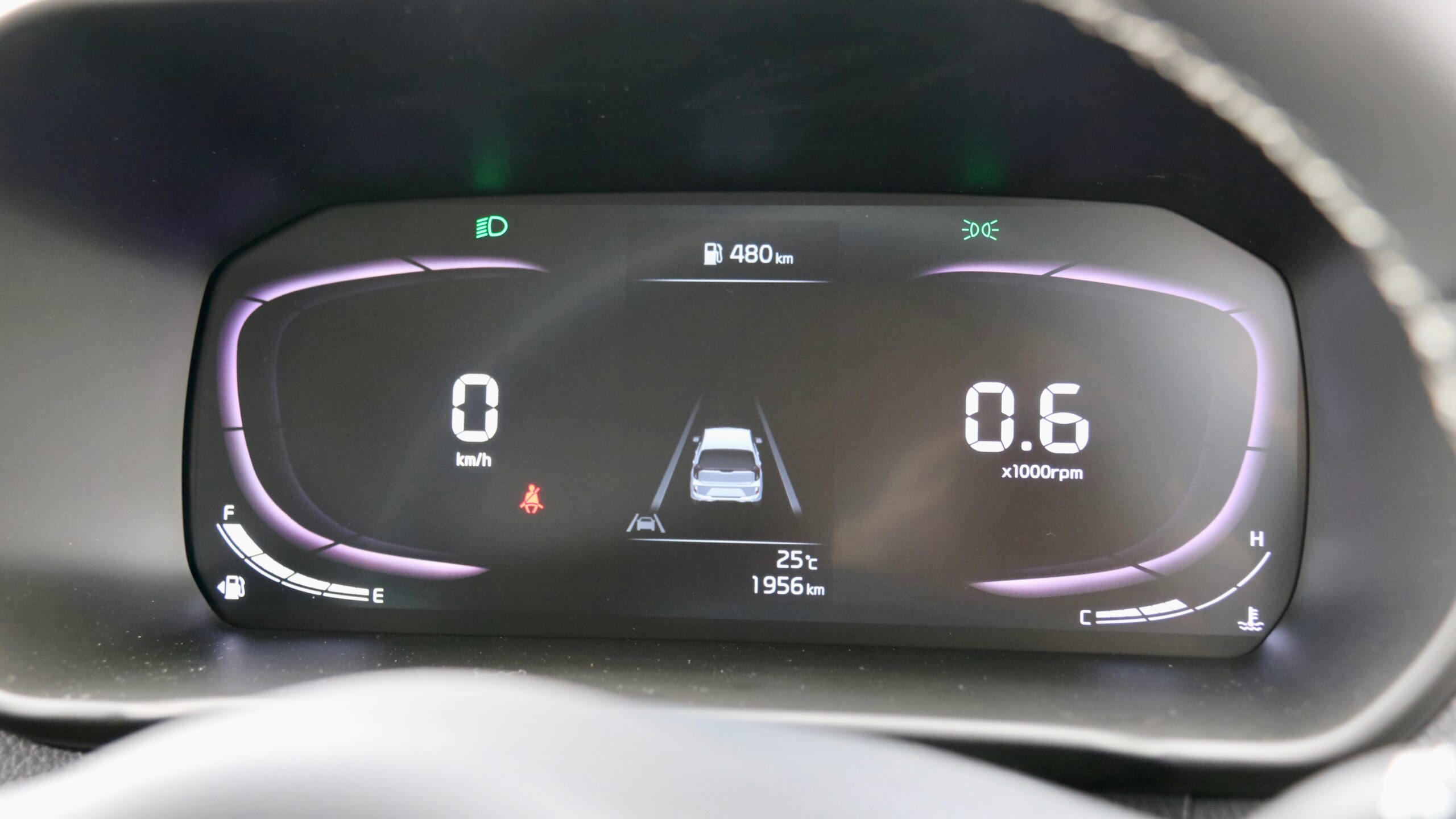
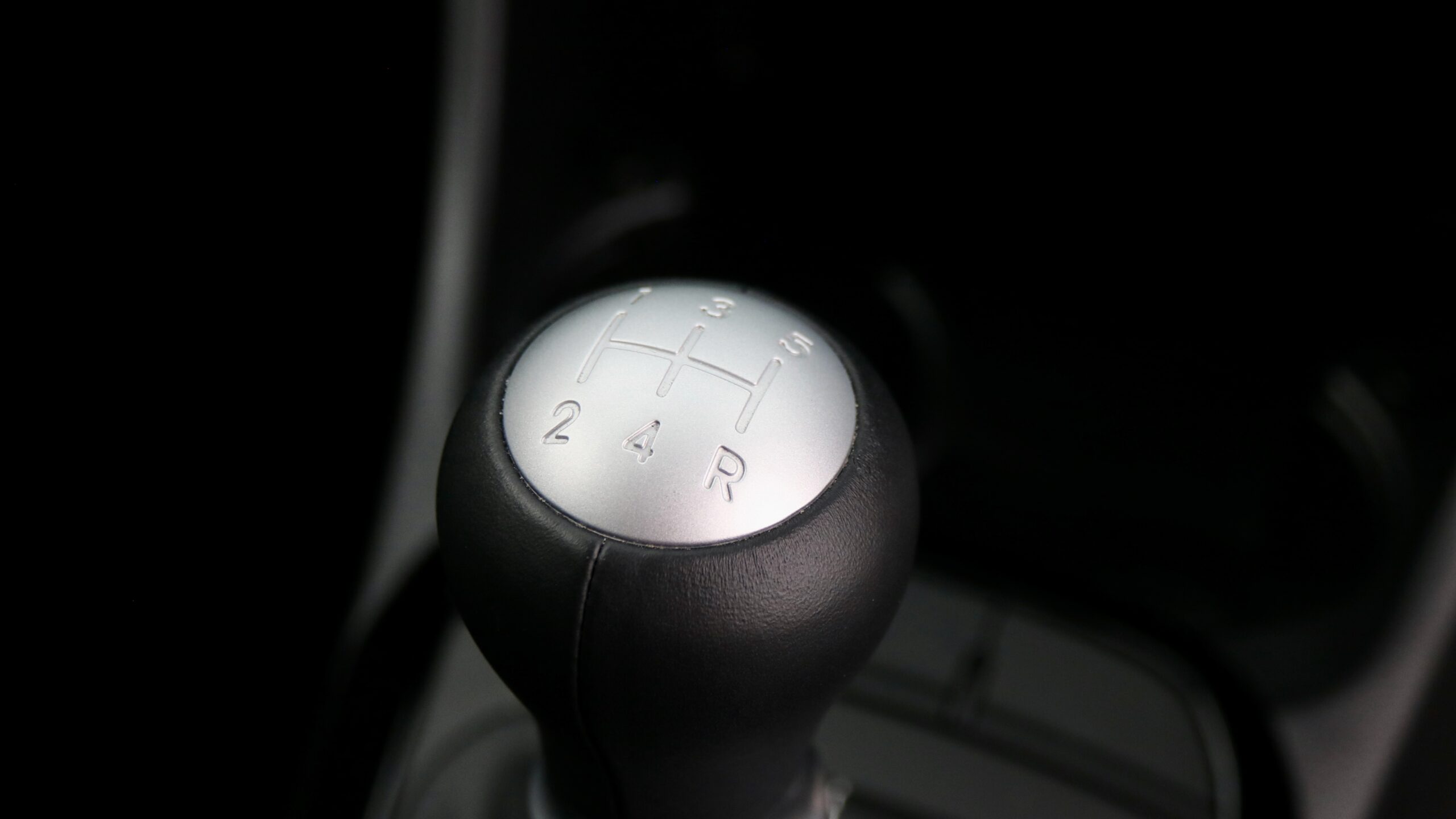
The engine in the Picanto isn’t the newest unit around, nor is it the punchiest engine in existence, but in purely urban situations, it’s totally fine and is quicker than you might expect. Because of the manual’s shorter gearing, you’re never too far from the peak torque of the engine (it hits at 4,000rpm) and propulsion is reasonable. The Picanto struggles a bit at highway speeds but again because of the short gearing, in fifth gear at 100km/h the engine is spinning at above 3,000rpm and overtaking isn’t too bad – it can be a bit loud at those speeds, however. While the Picanto’s engine is fine for most buyers, we really wish that Kia HQ hadn’t killed off the wonderful Picanto GT and its lovely turbocharged three-cylinder petrol engine because it was more driveable, more efficient and punchier than the GT-Line’s engine.
There are two gearboxes available for the Picanto range in Australia: either a standard five-speed manual or an optional four-speed automatic. If you’re choosing between the two, we say definitely get the manual as, while it’s not the most precise or sweetest gearbox around, it gives the Picanto’s modest performance figures more pep and makes it capable of impressive economy figures. Like the gearbox, the clutch’s light action doesn’t give much feel, but it’s easy to operate.
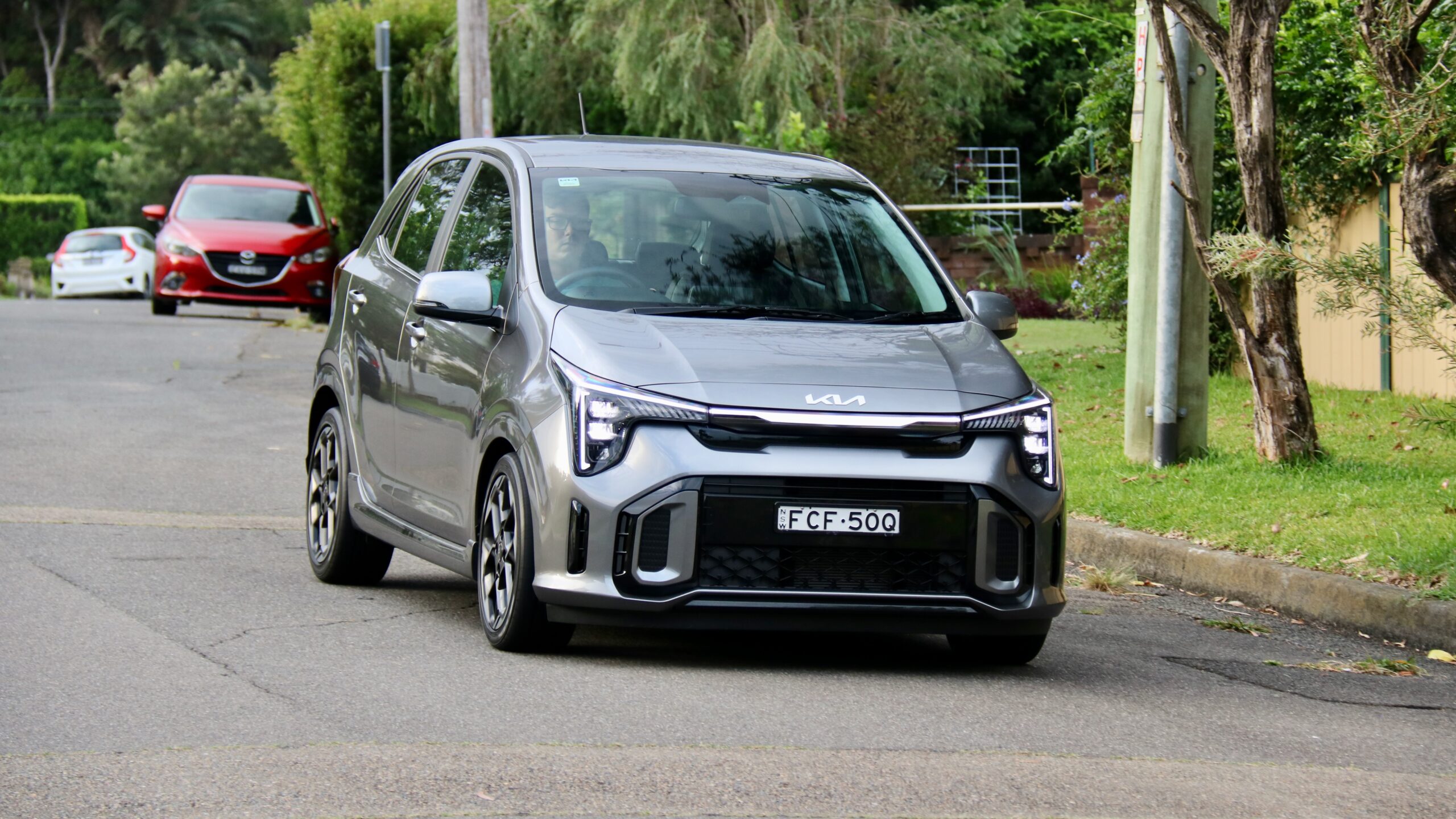
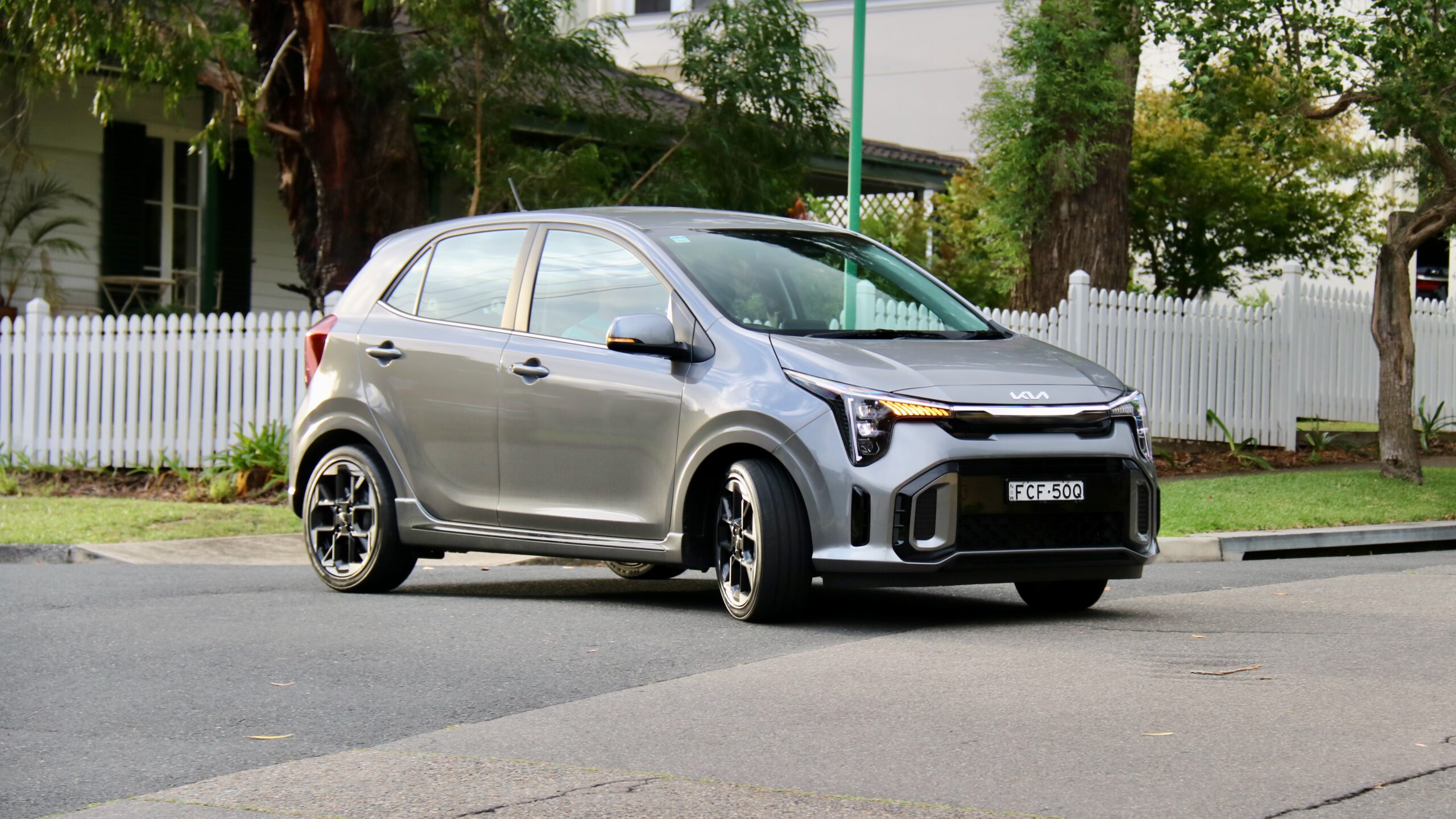
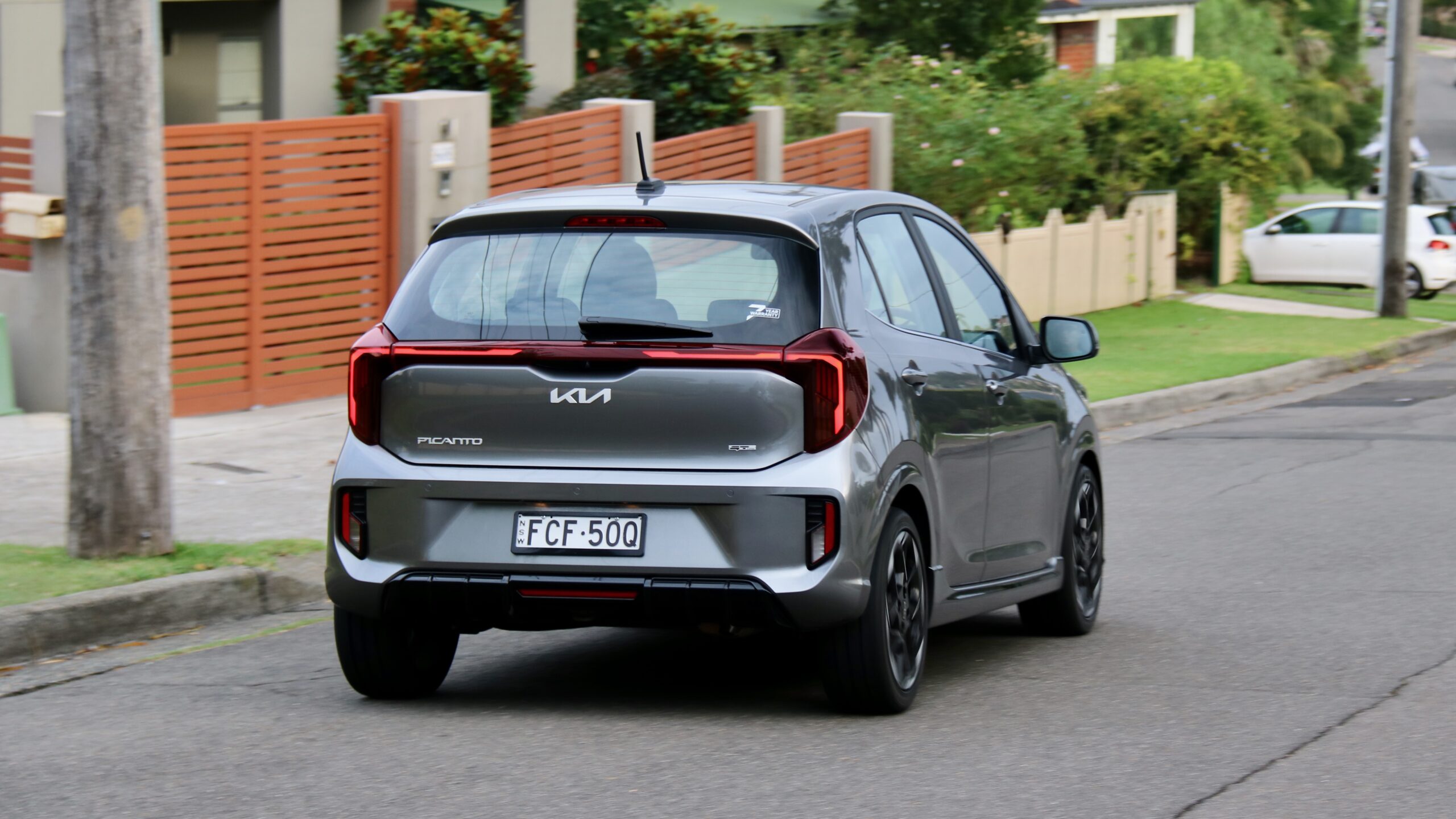
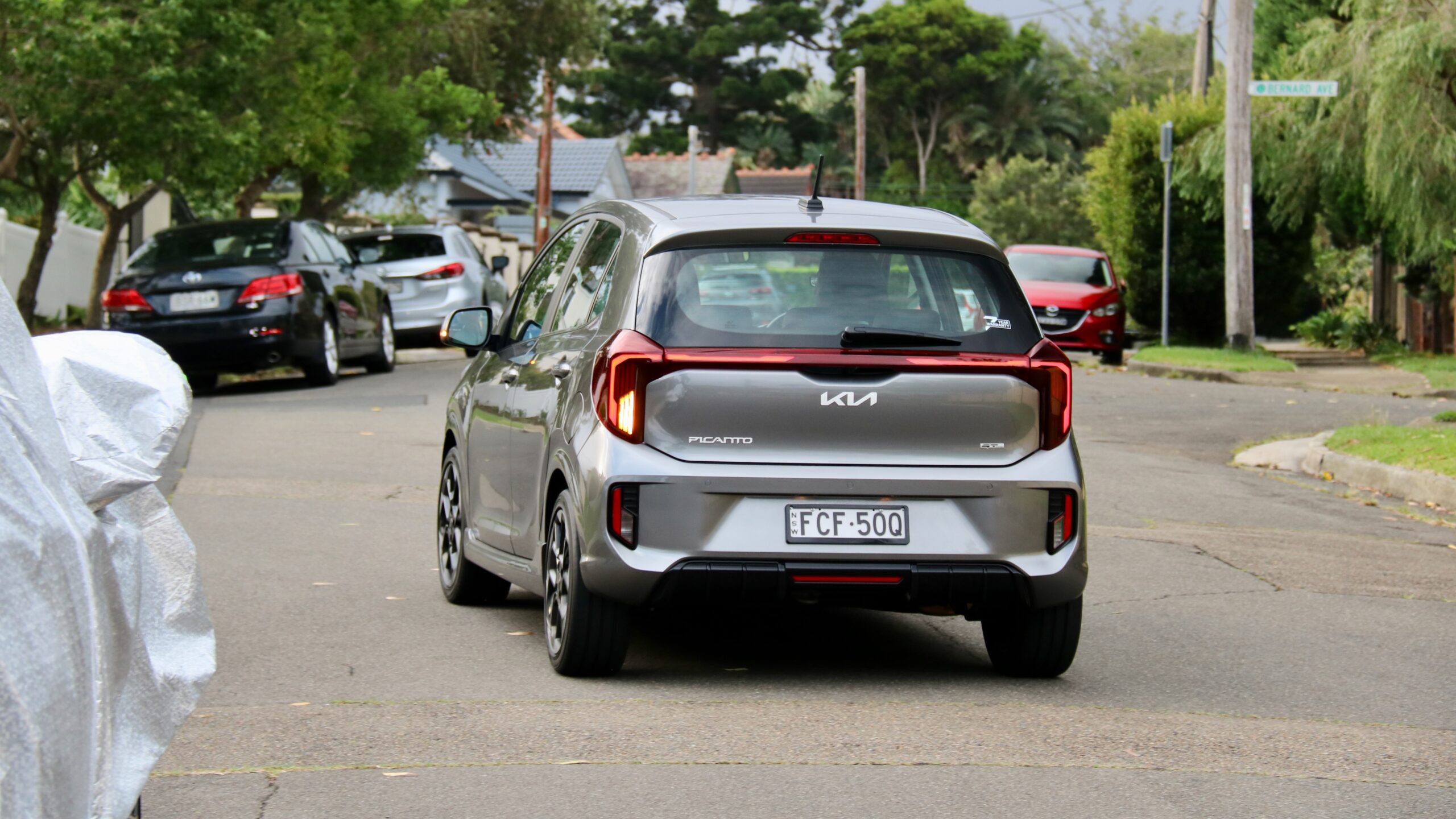
The claimed combined fuel consumption for the Picanto GT-Line is 5.4L/100km with claimed CO2 emissions of 125g/km, and in our week of testing that skewed towards urban driving, we achieved 5.8L/100km and that included more than a few trips in the low-4L/100km zone. Helping running costs further is that the Picanto can run on 91RON regular unleaded, while it has a 35-litre fuel tank. Against the Picanto, the MG 3 is rated at 6.7L/100km (claimed but we’ve heard from owners that they use significantly more than that) and must use 95RON premium unleaded fuel.
How comfortable is the 2024 Kia Picanto GT-Line?
Unlike a lot of other elements, the dynamic package of the 2024 Kia Picanto GT-Line remains identical to the pre-updated model, which means that it’s still a fun and reasonably comfortable car to drive and Kia’s chassis wizardry remains intact. The suspension of the GT-Line is taut and somewhat sporty, and that gives a decent fun factor from behind the wheel. The GT-Line’s handling is fun and while it’s no Fiesta ST or i20 N, it’s still more than capable of giving you a smile from behind the wheel. The ride quality can be a touch sharp on larger bumps, but it’s otherwise comfortable. The steering isn’t the last word in feel, but is nicely quick.
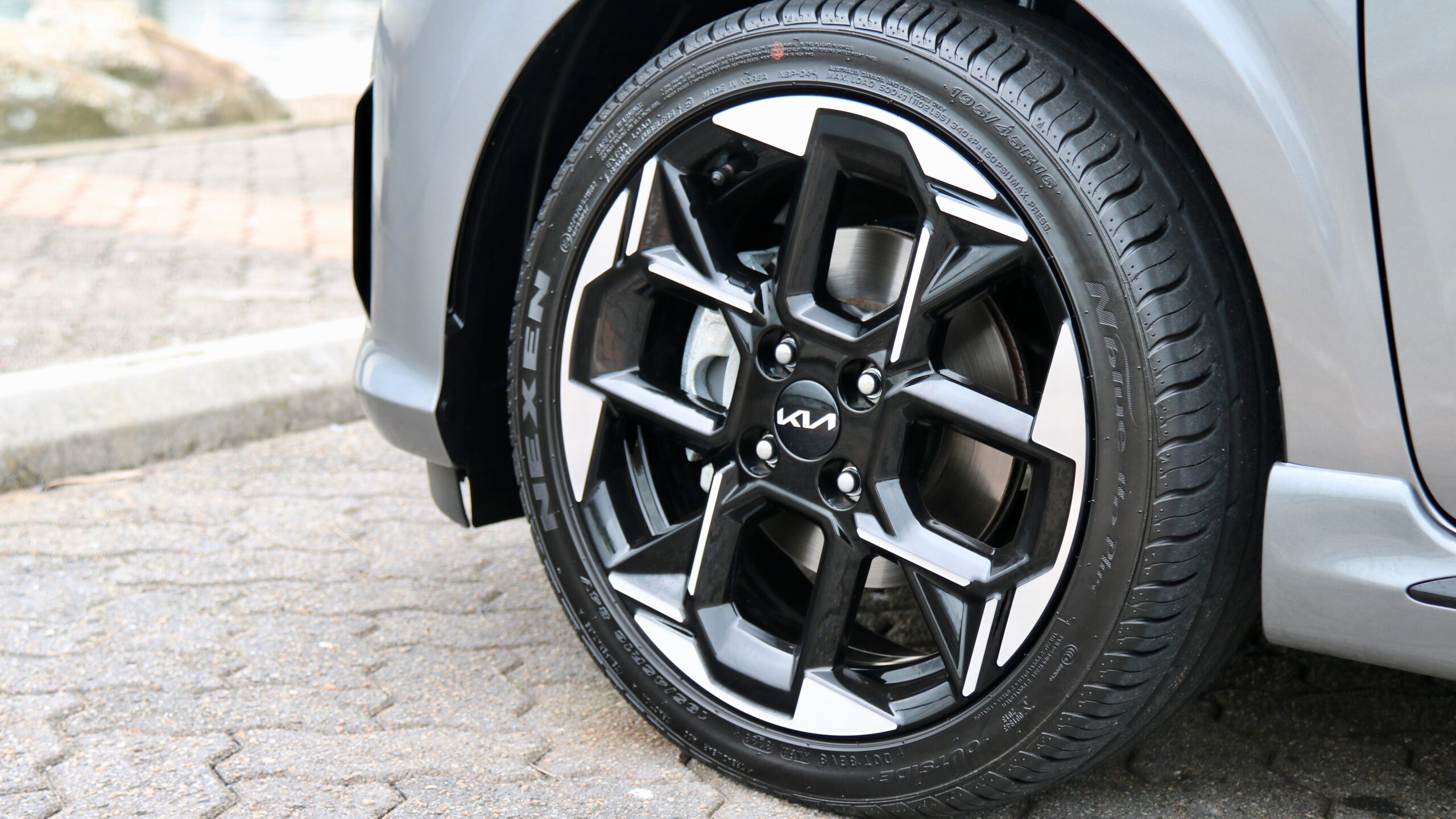
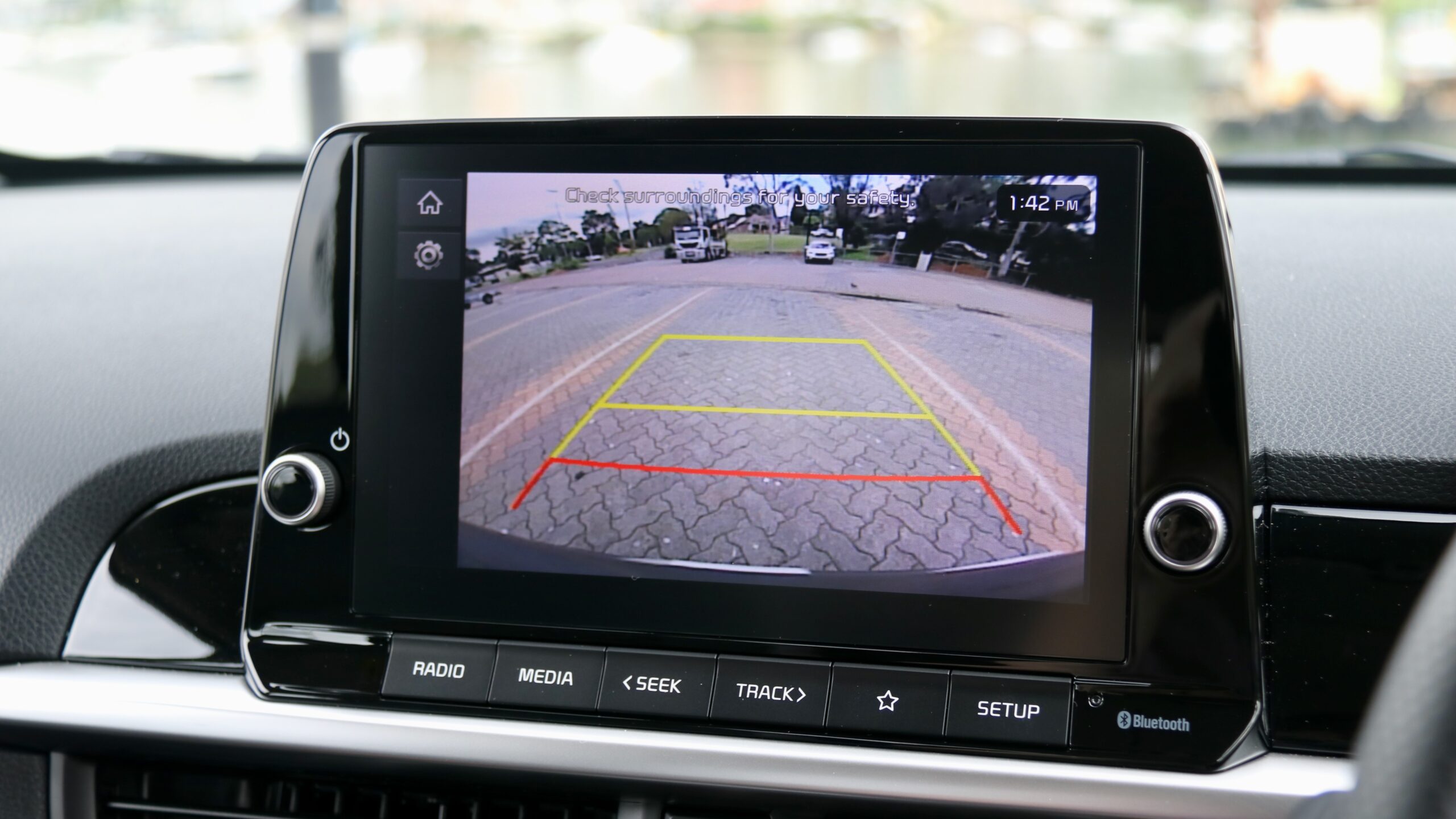
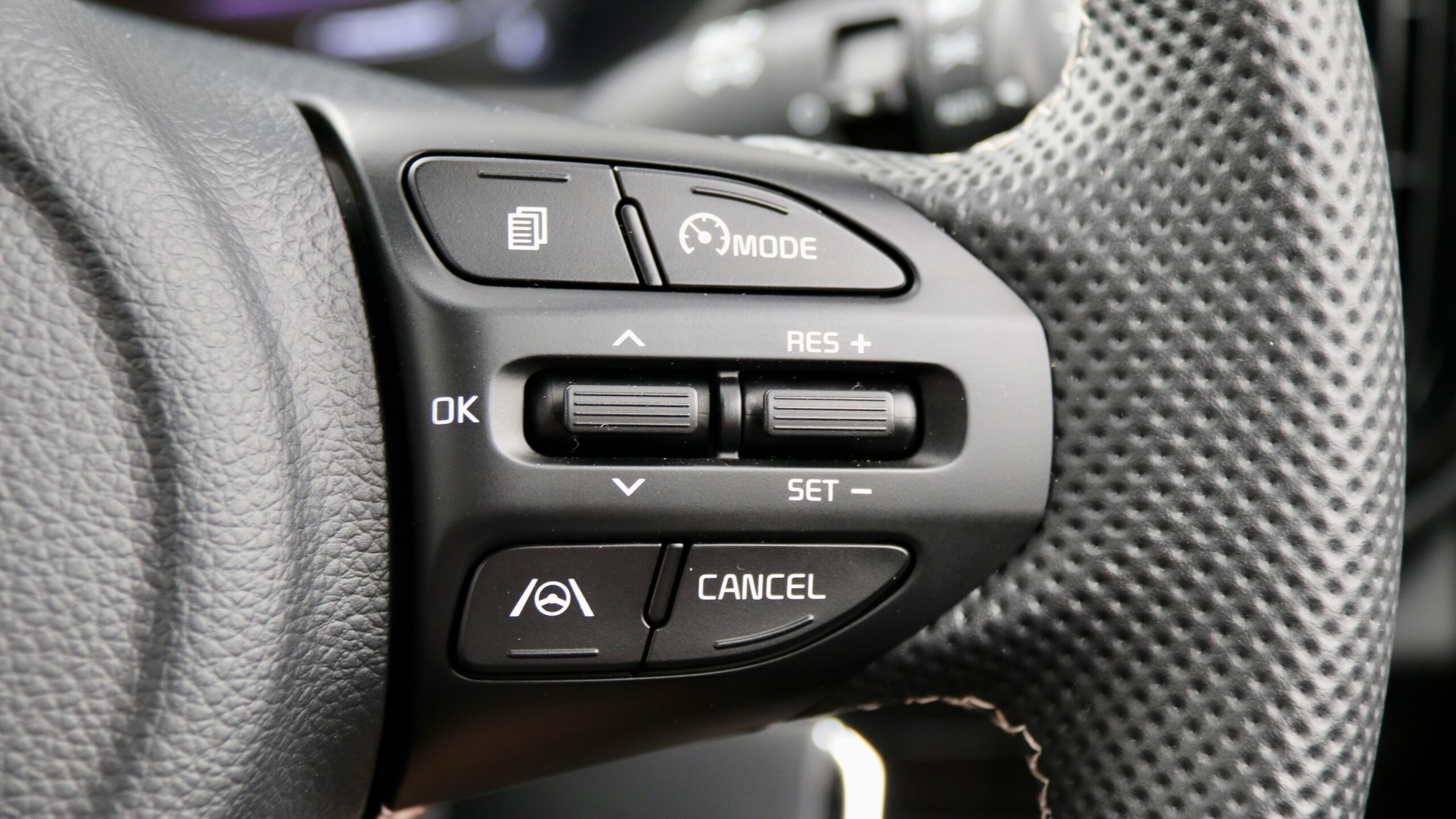
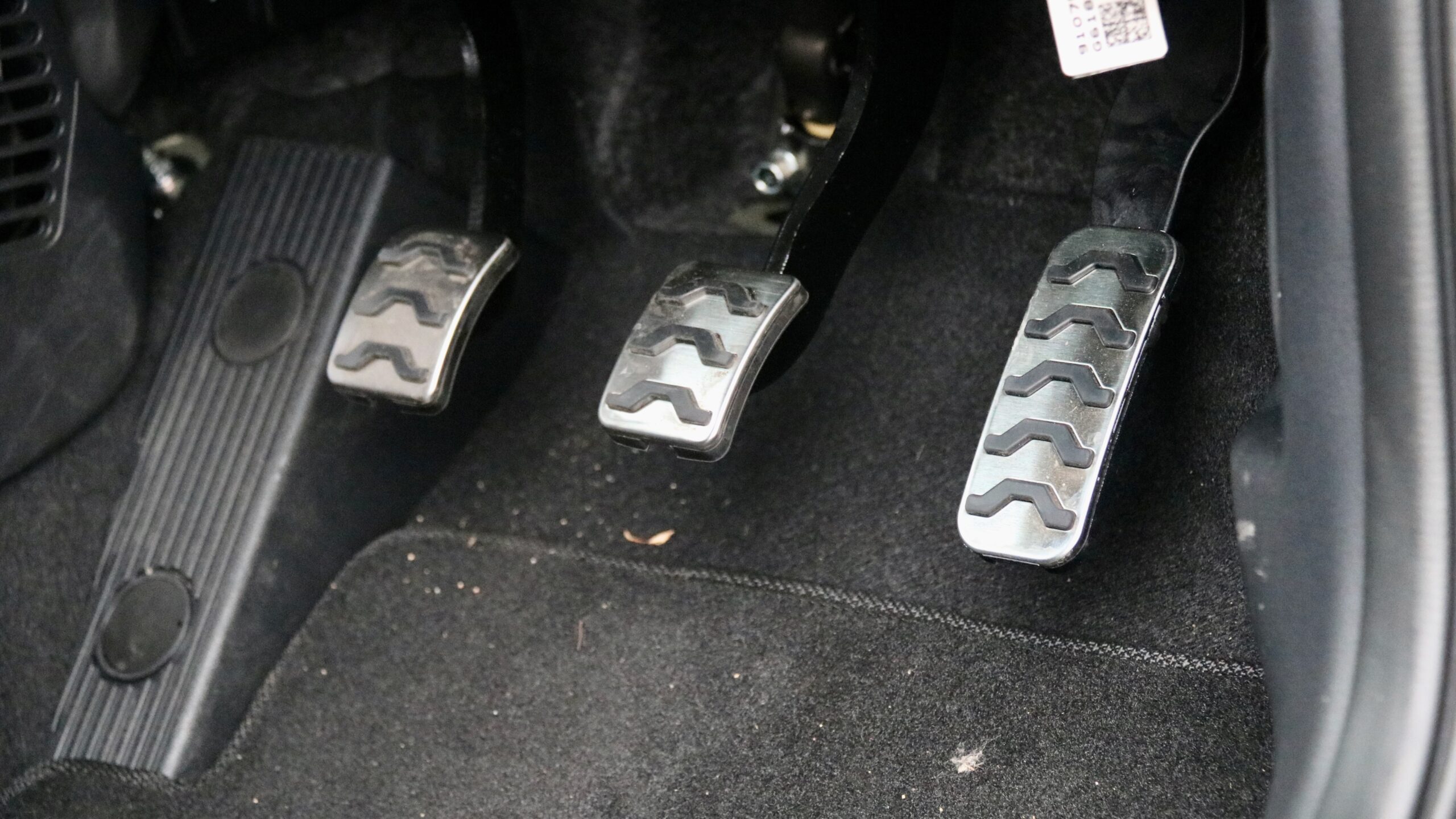
Elsewhere in the Picanto’s driving experience is also mostly positive. Highway road noise levels aren’t great, but around town, it’s perfectly well refined for the price. For us, the biggest improvement for the Picanto range is just how many more safety features it’s now equipped with. The pre-facelifted model had just AEB, but now it also has blind-spot monitoring and rear cross-traffic alert (both with braking), lane keeping assistance with adaptive lane guidance, safe exit assist and even auto high beam. All of this works well and unlike newer Kia models with the adaptive speed assist system – of which the Picanto does not feature – the driving experience is calm and collected. While it doesn’t feature adaptive cruise control, it’s still an impressive list of equipment, especially for the money.
How practical is the 2024 Kia Picanto GT-Line?
The interior of the 2024 Kia Picanto GT-Line didn’t see as many changes as the exterior, but it’s still a comfortable, well-featured and practical place to spend time. As you’d expect for a car of this price, there are barely any soft touch materials, but the build quality is good and everything looks good as well. The stitched synthetic leather trim on the steering wheel, arm rests and gear knob gives a slight luxury touch to the cabin as well. There are clever details in the Picanto’s cabin like the central cupholders with moveable covers, as well as a handy storage tray located above them.
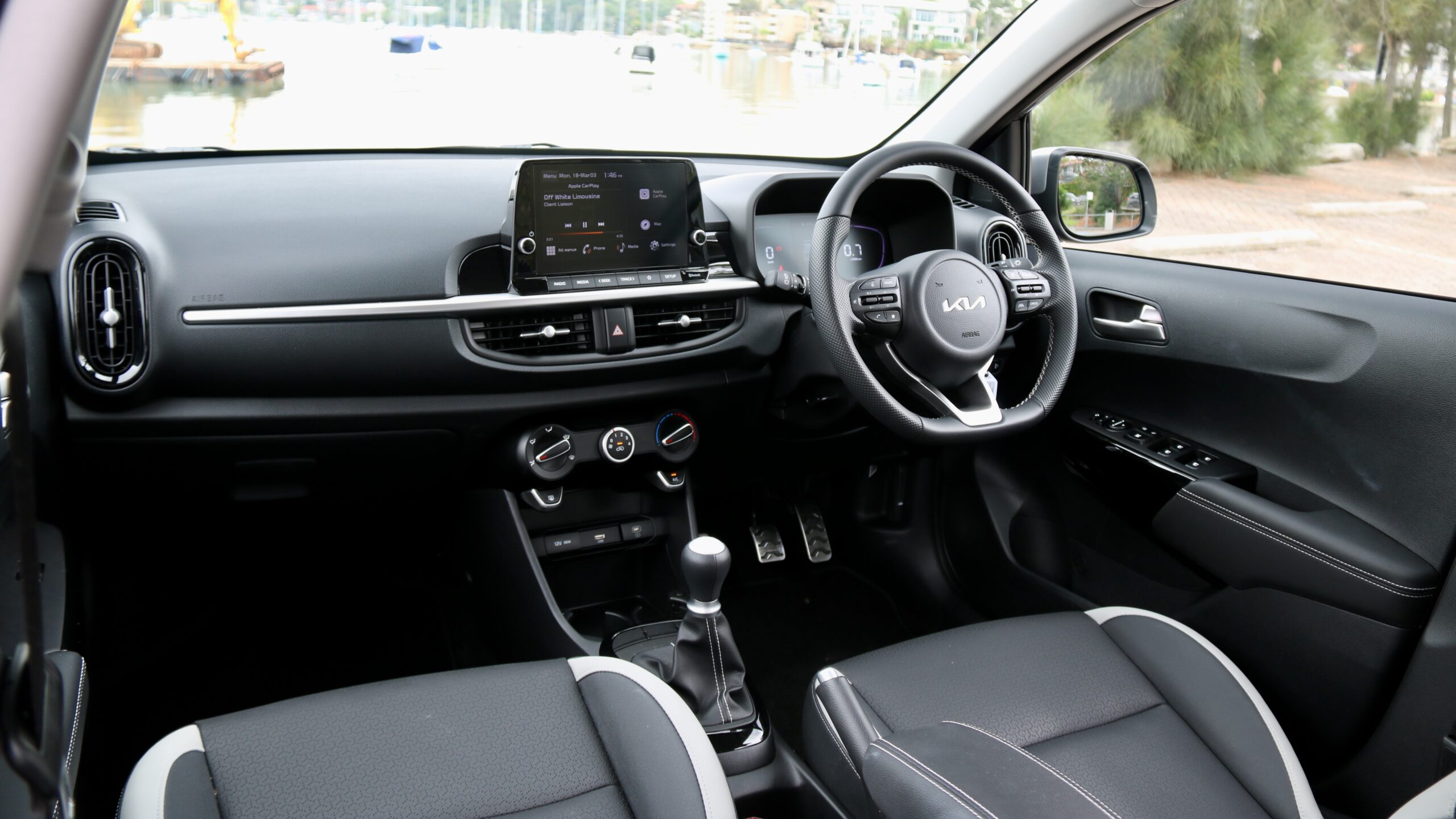
The Picanto’s practicality is impressive for its size and you can tell that Kia has tried to accomodate as much practicality as possible given its small size. The door pockets accomodate reasonable bottles, the glovebox is nicely sized, the box underneath the central armrest isn’t huge but at least it has it and the aforementioned storage area underneath the dashboard is also accomodating. The Picanto’s driving position is solid – though we wish the steering wheel had reach adjustment – and the seats are quite comfortable as well.
Centre of the Picanto’s cabin is the same 8.0-inch touchscreen as the pre-facelifted model, but it’s easy to use and nicely speedy too. It features wireless Apple CarPlay and Android Auto smartphone mirroring, as well as AM/FM radio and a quiet mode that limits the volume, though no satellite navigation, no digital radio and Kia’s connected services don’t feature either – while we’d like to see the latter feature, the former is no issue given the car’s price and how easy the wireless smartphone connectivity is to set up. The six-speaker sound system is pretty good for the price and we appreciate how much effort Kia is putting into even its regular sound systems.
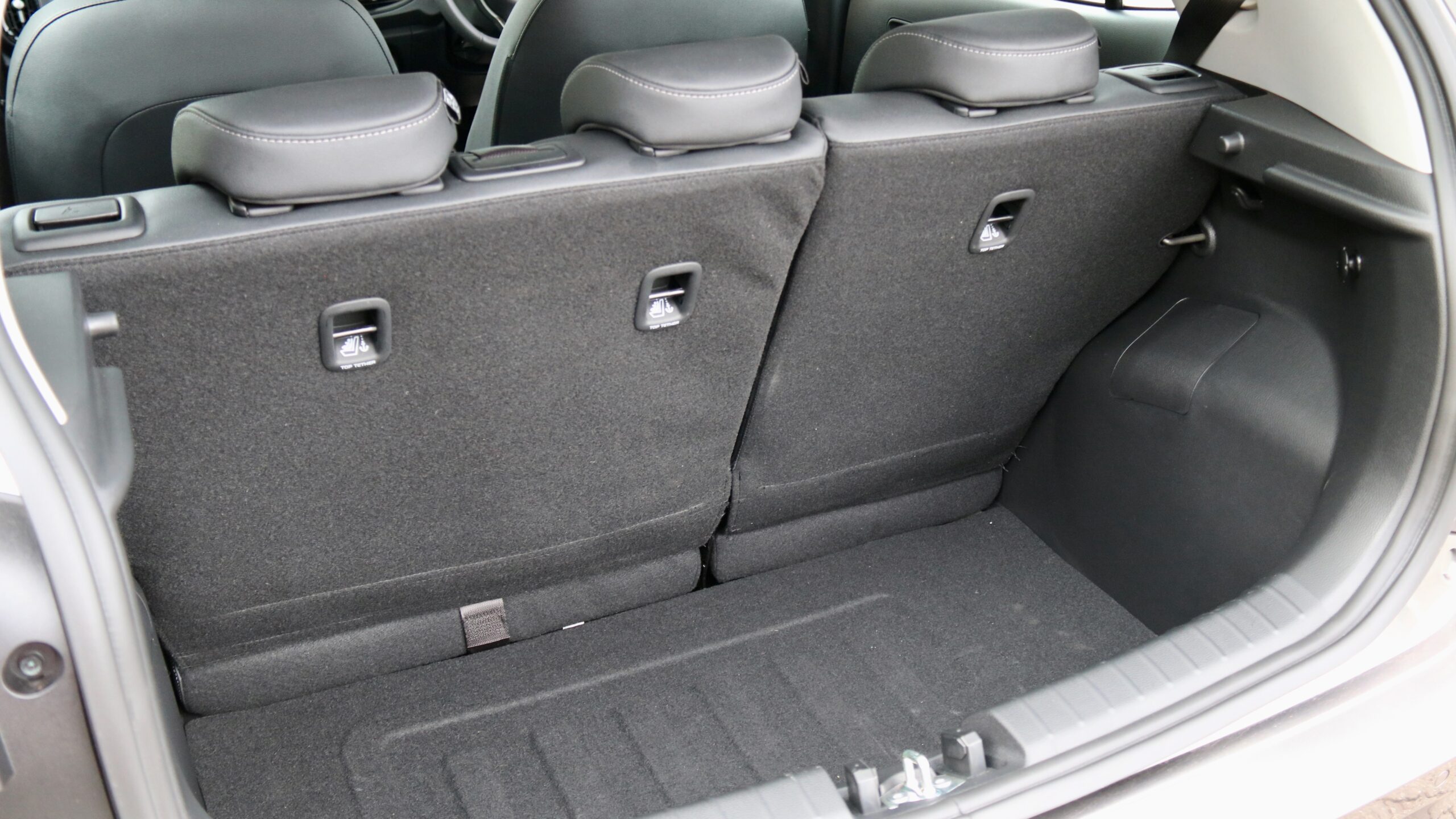
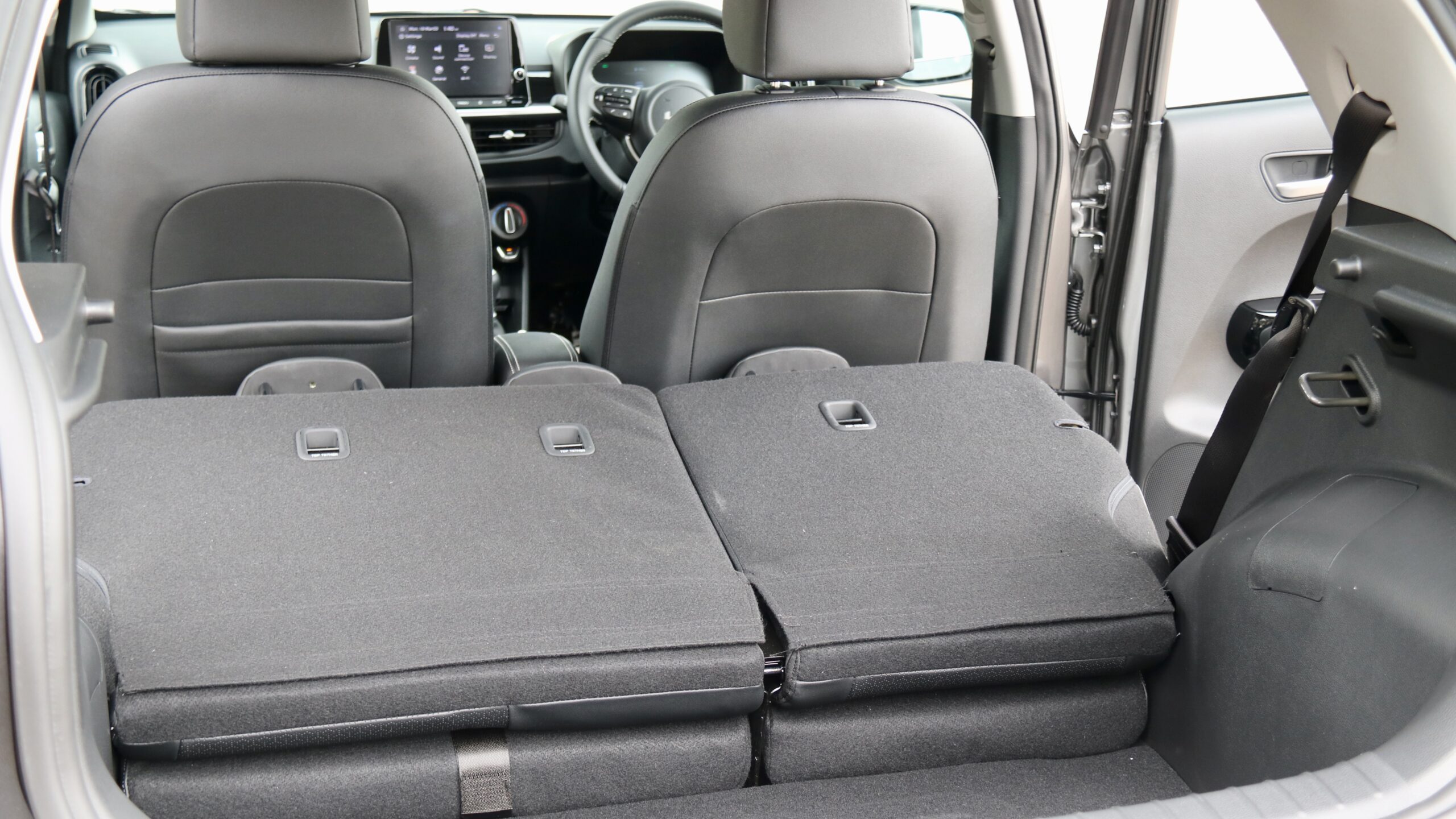
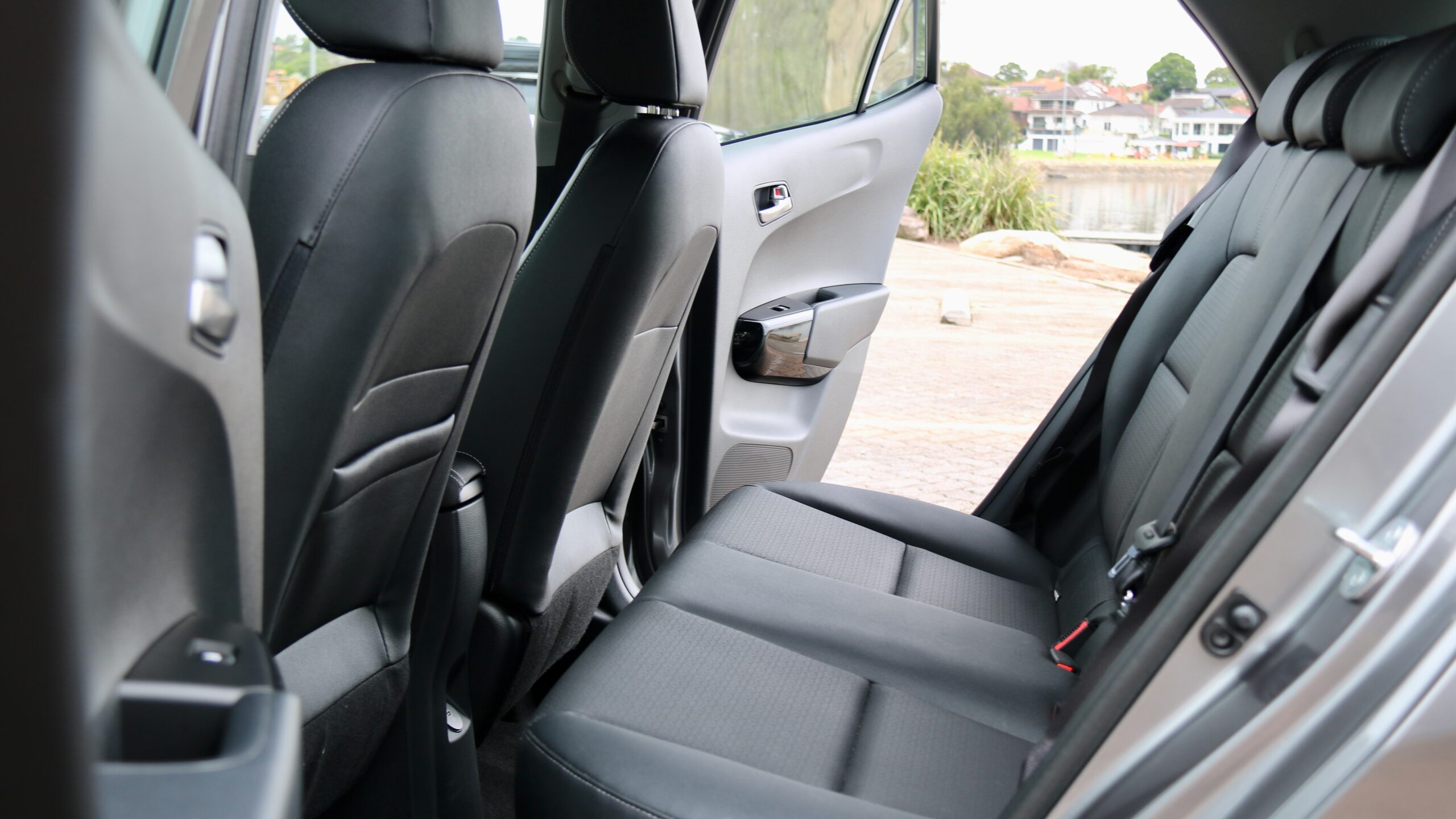
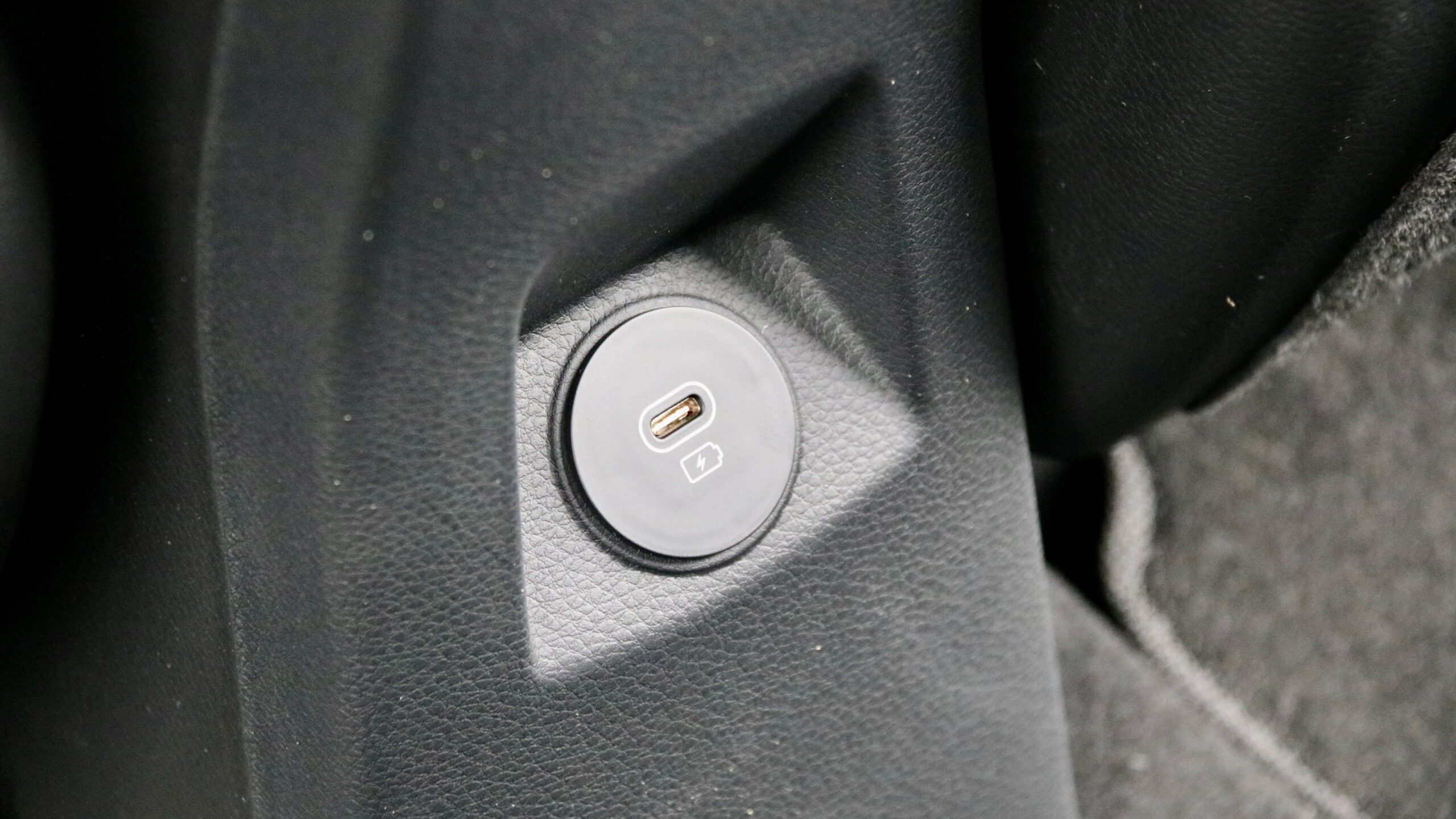
The back seat of the Picanto is not its strongest suit but it’s roomier than you might think given its small exterior dimensions. Two six-foot adults will fit snugly (the lack of rear legroom is the issue here, as the headroom is quite reasonable) and there are some amenities like map pockets and a USB-C charging port, but no door pockets. For child seats, there are three top-tether points and two ISOFIX points too.
Like the rear seat, the boot of the Picanto is not huge at 255-litres with the seats up and 1,010L with them folded (48L/71L smaller than the larger MG 3), but it’s surprisingly deep. The seats fold flat, but there’s an annoying ridge between the seat base and boot floor – we wish Kia Australia featured the dual-level boot floor that some markets get, as that would make the boot floor flat with the rear seats folded. Underneath the boot floor is a space-saver spare wheel.
What warranty covers the 2024 Kia Picanto GT-Line?
Being a new Kia, the Picanto is covered by a seven-year/unlimited kilometre warranty. Roadside assistance is offered for 12 months upfront, but at every scheduled service through a Kia dealership, a further 12 months is added for up to eight years in total. Servicing the 2024 Kia Picanto GT-Line occurs every 12 months or 15,000km, whichever comes first, and the cost to service it over the span of five years or 75,000km is $2,069 (or $413.80 per service on average).
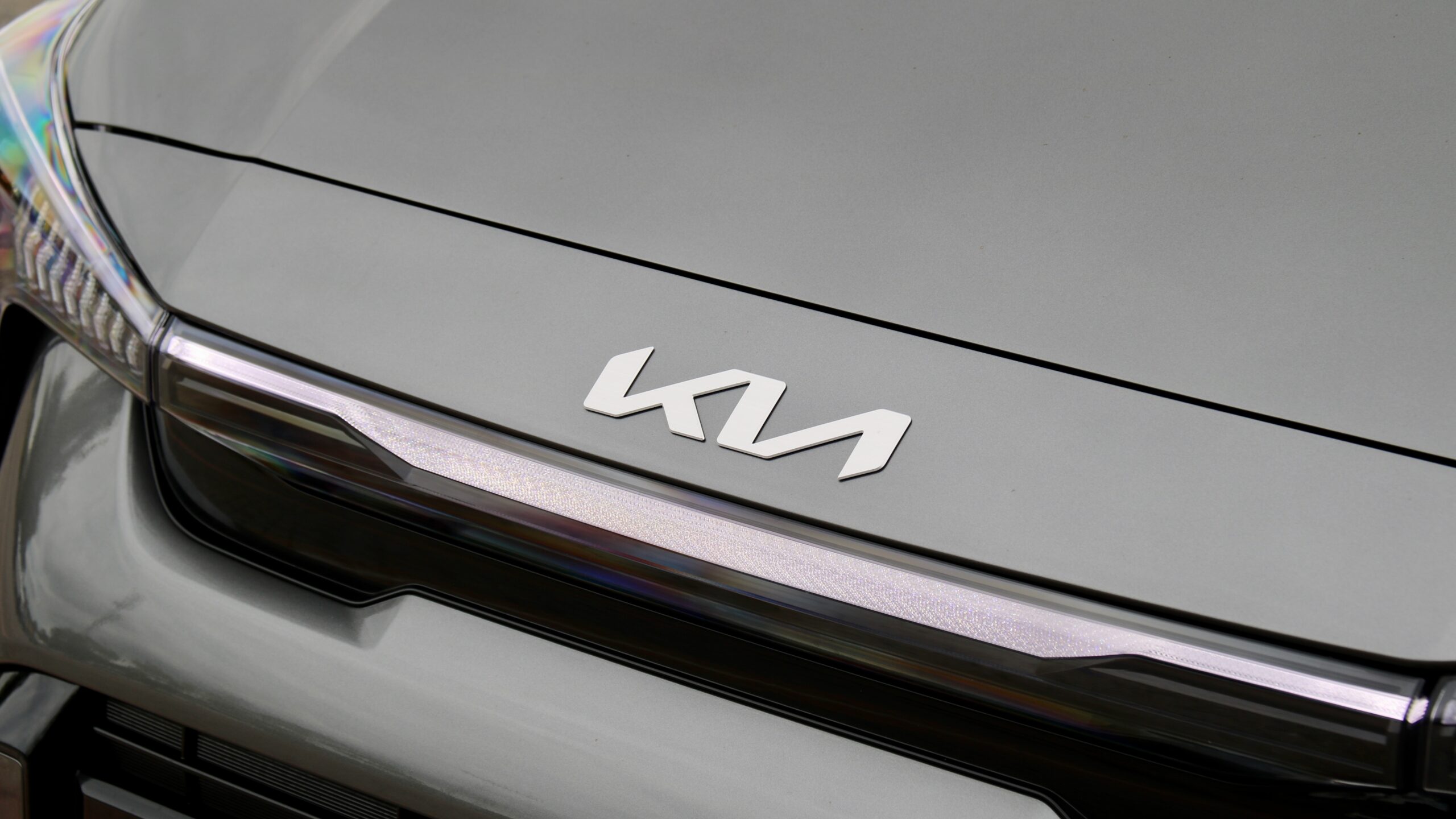
Like Kia, MG also covers its products with a seven-year/unlimited km warranty with up to seven years of roadside assistance if serviced at an MG dealer, though the MG 3’s service intervals are a lesser 10,000km (5,000km less than the Picanto). Five years/50,000km of servicing the MG 3 costs $1,445 ($289 per service), which is a lot less than the Picanto, but those driving more than 10,000km annually will need more than one service, unlike the Picanto and its longer service intervals.
Should I buy a 2024 Kia Picanto GT-Line?
Overall, buyers looking to spend around $20,000 on a new car in Australia have a very limited range of options and in our opinion, there’s only one that should be considered: the Kia Picanto. The Picanto does a lot right, especially for the money: it’s more practical than its small dimensions suggest, it’s very well equipped for the money, it looks good, it’s good quality and thanks to the recent facelift, now features significantly more active safety equipment and it’s quite impressive for the money.
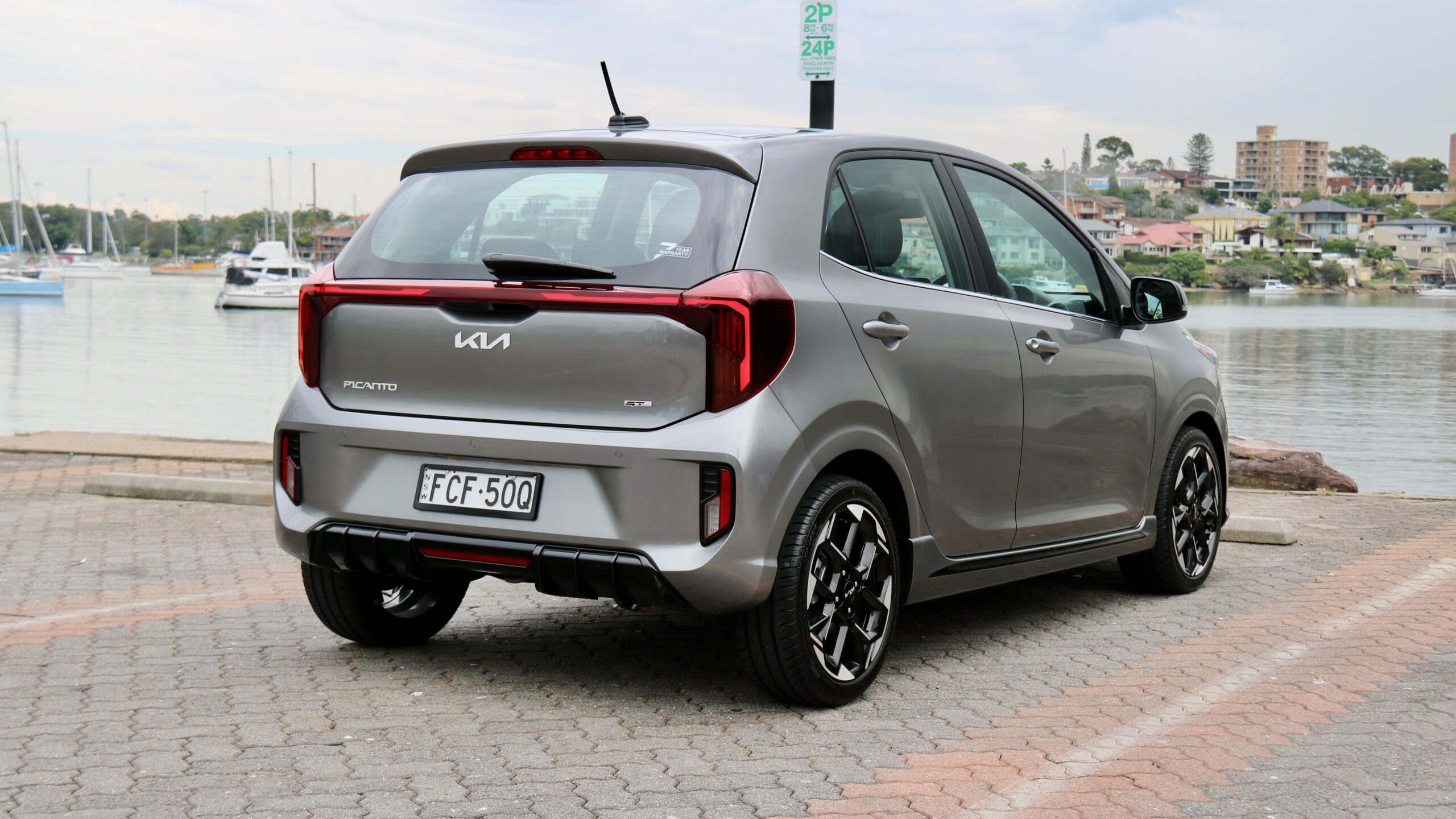
Sure, just like rivals, it now costs more than it used to, plus its service costs aren’t cheap and its performance is nothing special, but the Picanto – especially in GT-Line trim tested here and especially with the five-speed manual transmission – is a fun and characterful car to drive that we’re big fans of. Again, we think that the lack of new car choice at this pricepoint in the market is extremely frustrating but if you’re after a new car of this price, we think the only option is the 2024 Kia Picanto GT-Line.

Leave a Reply